Professional best practice from the Institution of Lighting Professionals February 2023
FOLLOW YOUR NORTH STAR
How lighting can (and must) make a difference in addressing climate change
MEET AND GREET
Inside a Swedish food court’s transformation, achieved without throwing away a single light
STEWARDS OF NATURE
Learning lessons on what is – and what perhaps isn’t – ‘bat-friendly’ lighting
The publication for all lighting professionals


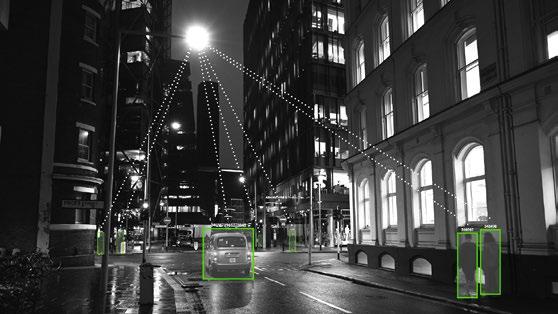
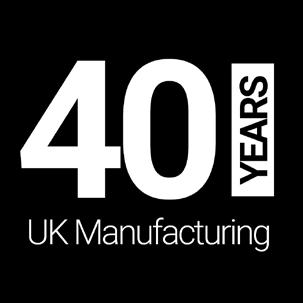
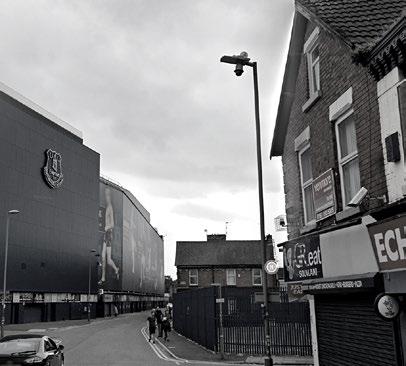


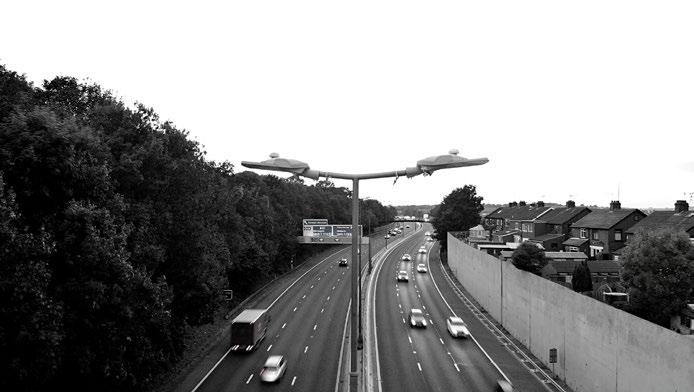








asdlighting.com 01709 374898 sales@asdlighting.com Discover More To view our range of exterior lighting, visit our website or scan the QR code & discover lighting solutions for you. Established in 1982 ASD Lighting PLC Design, Develop & Manufacture in Rotherham, South Yorkshire, UK.
Highway Electrical Association Award Winner 2022
06 CYCLING IN THE DARK
38
LEARNING ENVIRONMENT
Well-specified and well-considered lighting design within a classroom can improve the lives of all learners, especially those who are visually impaired, argues Paolo Creati

40 FOLLOW YOUR NORTH STAR
TACKLING VIOLENCE
Darkness puts people off from cycling because of increased concerns about safety. Analysis of crash records by Dr Jim Uttley and Professor Steve Fotios shows these concerns are well-founded. The risk of a cyclist being involved in a crash is significantly greater when it is dark, and the risk of it being fatal, particularly when there is no road lighting present 10

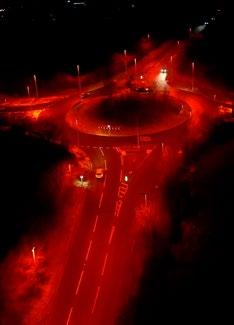
The ‘Safer Parks Strategy’ is focused on a small group of public spaces and parks within the region of Northumbria. Its aim is to develop an overall review of the existing lighting as well as detailed observations and recommendations for improvements that could be scaled up for other parks in the area, write Elizabeth
Harrison and Paul Brownbridge
NATURAL HABITAT
Worcestershire County Council’s rapid LED rollout programme is both a response to the energy crisis and an opportunity to tackle the adverse impacts of artificial lighting at night on bats, flora and fauna. As Cody Levine and Stuart Morton explain, it also chimes with the ROLAN manifesto
20 STEWARDS OF NATURE
The latest ILP ‘How to be brilliant’ event saw Hoare Lea’s Juan Ferrari and Brad Joseph make an impassioned and uncompromising plea for lighting to step up and lead the change that’s needed to mitigate global warming, as the practice is doing through its ‘North Star commitment’
46 GOING UNDERGROUND
Accidental strikes on underground pipes and cables can cause expensive and timeconsuming hold-ups to projects. A new digital ‘National Underground Asset Register’ will allow contractors, including those working within lighting, to know better what to expect before breaking ground
48
MEET YOUR LDCS
Kieron Jarvis of Birmingham LDC and Anthony Smith of Durham LDC outline how you can get involved
50 STREETS AHEAD
The use of fluorescent lighting had matured during the Second World War but, by the end of hostilities, it was still primarily thought of as an interior light source. Could it, however, work for exterior use and, especially, street lighting? As Simon Cornwell outlines, the race was on





MEET AND GREET
Lighting designer Chiara Carucci’s experience in lighting the Collepardo Caves near Rome has taught her important lessons on what is (and isn’t) ‘bat-friendly’ lighting 26

A misjudged revamp just three years ago had left the ‘MEET’ food court in Stockholm’s Kista Galleria as an unwelcoming, hangar-like space. But the fact the fixtures were so new, and of high quality, meant the subsequent refurbishment was achieved without throwing away a single light, writes
 Beata Denton
Beata Denton
32 CHANGING CLIMATE CHANGE
The increasing urgency of the climate crisis requires everybody to act now and change the way we produce and consume. Metrics and tools such as CIBSE’s TM66 can now provide a valuable route map for lighting professionals. Dr Irene Mazzei reports
54
‘THE IMPACT LIGHTING HAS ON SOCIETY IS DISPROPORTIONATE TO PEOPLE’S AWARENESS OF IT’












Continuing our snapshots of young and new entrants to the industry, undergraduate engineer Sofia Piccoli explains why she chose lighting as a career
56 MANCHESTER, HERE WE COME
This year’s Professional Lighting Summit will be held from 14-15 June in Manchester. So, writes Jess Gallacher, save the date!
COVER PICTURE
245 Hammersmith Road, illustrating the new lighting scheme by Hoare Lea. The project is one that promotes the practice’s ‘North Star’ commitment to sustainability within lighting. From page 40, Juan Ferrari and Brad Joseph explain how lighting professionals can be more ‘on it’ in tackling and mitigating climate change. Photograph by Jack Hobhouse
16
Contents
6
www.theilp.org.uk FEBRUARY 2023 LIGHTING JOURNAL 3 anolislighting.com CALUMMA™ OUR
FAMILY
20
26 50 16
NEW





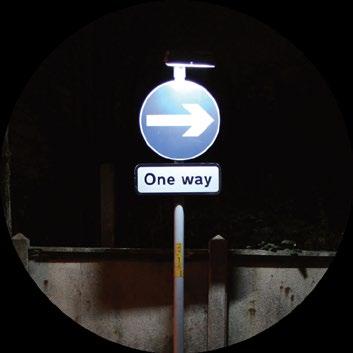


In 2023, most fluorescent PL and T5 lamps, commonly used in sign and bollard illumination, will be removed from the market. Use INDO’s retrofit LED lamp for a quick, simple & low cost upgrade solution. Over 100,000 have been installed in UK traffic applications. Areyoureadyforthe upcomingRoHSchanges? Getaheadoftheupcomingchangesbycontactingustofind outmore.Email-hello@indolighting.com
Volume 88 No 2
February 2023
President
Fiona Horgan
Chief Executive
Justin Blades
Editor
Nic Paton BA (Hons) MA
Email: nic.cormorantmedia@outlook.com
LightingJournal’scontentischosenand evaluatedbyvolunteersonourreaderpanel, peerreviewgroupandasmallrepresentative groupwhichholdsfocusmeetingsresponsible forthestrategicdirectionofthepublication. Ifyouwouldliketovolunteertobeinvolved, pleasecontacttheeditor.Wealsowelcome reader letters to the editor.
Graphic & Layout Design
George Eason
Email: george@matrixprint.com
Advertising Manager
Emma Barrett
Email: ebarrett@matrixprint.com
Published by
Matrix Print Consultants Ltd on behalf of Institution of Lighting Professionals

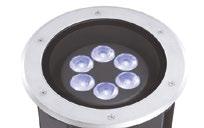

Regent House, Regent Place, Rugby CV21 2PN
Telephone: 01788 576492
E-mail: info@theilp.org.uk
Website: www.theilp.org.uk

Produced by
Matrix Print Consultants Ltd
Unit C,Northfield Point, Cunliffe Drive, Kettering, Northants NN16 9QJ
Tel: 01536 527297
Email: gary@matrixprint.com
Website: www.matrixprint.com
© ILP 2023
The views or statements expressed in these pages do not necessarily accord with those of The Institution of Lighting Professionals or the Lighting Journal’s editor. Photocopying of Lighting Journal items for private use is permitted, but not for commercial purposes or economic gain. Reprints of material published in these pages is available for a fee, on application to the editor.
The song The Sun and the Rain by the band Madness starts with the line, ‘It’s raining again’, which definitely rings true as I sit here in mid-January with the wind howling and the rain sheeting down again, as it has done for pretty much the whole month.
I’m no climatologist but, after the record-breaking heatwave we had over the summer, an incredibly dry autumn and now unprecedented (it feels) early winter storms, for me climate change suddenly feels very real – and only going to get worse.
Of course, there is a difference between climate and weather. But the fact Britain experienced its hottest year on record in 2022, Europe recorded its hottest ever summer (beating the previous hottest of, er, 2021), and last year was the fifth hottest globally, to me rings serious alarm bells [1]. And that’s before we even get to the worrying climate changes we’re already seeing at the Poles, in Asia, in Africa and the Americas, in our oceans and beyond.
I’d venture to suggest Juan Ferrari of Hoare Lea feels much the same sense of urgency and passion about climate change, as certainly that was what came through in his ‘How to be brilliant’ talk with colleague Brad Joseph, as we report in this edition from page 40.
His description of the lighting design community as ‘we are the problem’ will, undoubtedly, have left many in the audience feeling uncomfortable, but he does have a point. There is no getting round the fact that lighting is a hungry user of energy both in terms of its use and purpose and, less directly, in its manufacture. And that energy use and generation, especially if fossil fuel-based, is the problem.
However, as Juan and Brad also highlighted, lighting can be – and increasingly wants to be –a solution (or at least much less of a villain). Hoare Lea’s five-point ‘North Star’ commitment, for example, is just the sort of very public and positive statement of intent others within the industry can follow – and indeed Juan and Brad in their talk urged others to borrow it and make it their own.
Equally, as Dr Irene Mazzei highlights from page 32, the increasing urgency of the climate crisis is going to require all lighting professionals to change how they act, produce and consume, with tools such as CIBSE’s TM66 playing an important practical role. Look out in next month’s edition, by the way, for how one lighting designer has successfully embraced TM66 and how it has changed how he practices as a result.
Responding to climate change also requires a mindset shift simply in how lighting professionals approach or think about new projects. As Swedish lighting designer Beata Denton has shown from page 26, it is very possible to make the transition away from a knee-jerk ‘rip out and replace’ mentality to one where the starting point, the default, is reuse. In the case of the MEET food court in the Kista Galleria in Stockholm, this meant being able to complete the whole project without throwing away a single light.
Finally, it is important within this that lighting professionals use their unique expertise to become leaders of change, to be brave and uncompromising in educating and bringing clients along with them on this change ‘journey’. This is important not just for how a client approaches your project in terms of sustainability and circular economy principles but because it may create a ripple effect; it may change how they then approach or think about subsequent projects, whether or not you’re involved. And that will, of course, be to the benefit of all of us.
Nic Paton Editor

[1] ‘2022 provisionally warmest year on record for UK’, Meteorological Office, December 2022, https://www.metoffice.gov.uk/about-us/press-office/news/weather-andclimate/2022/2022-provisionally-warmest-year-on-record-for-uk; ‘2022 saw record temperatures in Europe and across the world’, Copernicus: European Commission Climate Change Service, January 2023, https://climate.copernicus.eu/2022-saw-record-temperatures-europe-and-across-world
SUBSCRIPTIONS
ILP members receive Lighting Journal every month as part of their membership. You can join the ILP online, through www.theilp.org.uk. Alternatively, to subscribe or order copies please email Diane Sterne at diane@theilp.org.uk. The ILP also provides a Lighting Journal subscription service to many libraries, universities, research establishments, non-governmental organisations, and local and national governments.
Editor’s letter
www.theilp.org.uk FEBRUARY 2023 LIGHTING JOURNAL 5 ArcSource™ Inground 24MC Integral IN-GROUND AND IN-FOCUS anolislighting.com
CYCLING IN THE DARK
Darkness puts people off from cycling because of increased concerns about safety. Analysis of crash records shows these concerns are well-founded. The risk of a cyclist being involved in a crash is significantly greater when it is dark, and the risk of it being fatal, particularly when there is no road lighting present
 By Dr Jim Uttley and Professor Steve Fotios
By Dr Jim Uttley and Professor Steve Fotios
FEBRUARY 2023 LIGHTING JOURNAL 6
CCycling is a healthy, sustainable and economical mode of transport. Despite this, only 2% of trips are made by bicycle in the UK each year.
Gear Change, the Department for Transport’s 2022 vision statement for cycling, sets out the government’s desire to see half of all journeys in towns and cities walked or cycled, meaning local authorities have an obligation to promote cycling. In this article we ask what road lighting can do to support cycling after dark.

Many factors put people off from cycling, such as the physical effort involved, weather conditions and safety concerns.
Another significant factor is darkness. A survey of 1,402 people in Canada found that making a trip after dark on a route that was not well lit was one of the top barriers to choosing to cycle, particularly for people new to cycling [1] This is illustrated in figure 1. A survey by Sustrans, a UK cycling charity, found that only 36% of men and 23% of women felt safe cycling during hours of darkness [2]
Measurement of cycling behaviour in Birmingham and Cambridge also suggests there is a significant drop in cyclist
numbers after dark, even after accounting for time of day and seasonal changes such as weather conditions [3,4]
CRASH RISK AFTER DARK
One reason why darkness puts people off from cycling is likely to be the reduction in visibility that occurs after dark – it is more difficult to see and to be seen.
It is more difficult for cyclists to see potential hazards such as potholes and debris in the path, and drivers have greater difficulty seeing and recognising cyclists. This leads to cyclists feeling more vulnerable after dark.
Are these concerns borne out in the statistics on crashes involving cyclists? To answer this, we can consult ‘STATS19’, data from the reporting form used by police to record details of road traffic crashes resulting in a personal injury.
STATS19 provides a range of information about crashes, including the time they occurred, details about those involved and the surrounding environment, and the light conditions at the time of the crash. Figure 2 shows the annual number of crashes involving a cyclist casualty in daylight and darkness, for 2004 to 2021.
Lighting and cyclists
At first sight, the data in figure 2 suggests crashes after dark are relatively few, representing only 20% of all crashes involving a cyclist casualty. But this does not tell us the complete story. This is because it does not account for changes in the numbers of people travelling (here, cyclists and drivers) at different times of day.
To make a better estimate of crash risk in daylight and darkness, in our research we first focus on a particular time of day, what is known as a ‘case’ hour. Here we used 6pm to 7pm in the evening, chosen because it is in daylight for one part of the year and in darkness for another part.
Comparing crash counts when this hour is in daylight or darkness is not sufficient though, as it does not account for seasonal changes, particularly weather conditions, that are likely to affect crash risk and the number of people cycling.
We therefore also compare crash counts over a ‘control’ hour. Here we use 2pm to 3pm because that hour is in daylight for the whole year.
We use an odds ratio to compare the numbers of crashes in daylight and darkness in the evening alongside the numbers of
Figure 1. Deterrent score of having to cycle on a route not well lit after dark, by type of cyclist from the survey, as shown by Winters et al [1]
MUCH LESS LIKELY TO CYCLE -1 -0.5 0 NO INFLUENCE ON DECISION TO CYCLE DETERRENT SCORE REGULAR CYCLIST FREQUENT CYCLIST OCCASIONAL CYCLIST POTENTIAL CYCLIST NUMBER OF CRASHES INVOLVING CYCLIST CASUALTY 200002005 2010 2015 2020 150001000050000YEAR DAYLIGHT DARKNESS www.theilp.org.uk FEBRUARY 2023 LIGHTING JOURNAL 7
Figure 2. This illustrates the number of crashes involving a cyclist casualty by year and light condition in the UK, 2004-2021. Source: STATS19
Lighting and cyclists
crashes for the same times of year during the control hour. An odds ratio greater than 1.0 indicates that crash risk is greater after dark than in daylight.
Our previous work has shown that darkness significantly reduces the number of people cycling, even after accounting for time of day and changes in weather conditions [3,4]. We therefore used these data to weight crash counts by the numbers of people cycling at different times of day. These weighted counts are shown in figure 3.
From these data we calculated an odds ratio of 1.27. This shows the risk of a crash after dark is greater than during daylight.
The 95% confidence interval (1.22-1.33) shows that is a statistically significant result.
The increase in risk of a cyclist being involved in a crash after dark suggests there is potential for road lighting to mitigate that risk. This can be demonstrated by comparing the crash statistics for locations that are lit and unlit, a factor recorded in STATS19.
The numbers for fatalities are shown in table 1. The resulting odds ratio of 7.83 (95% CI: 6.58-9.30) shows that on unlit roads there is a massive increase in the risk of a cyclist fatality after dark.
DARKNESS AND CYCLIST FATALITIES
We focused on fatalities in that analysis of lit and unlit roads because injury severity is expected to increase after dark.
In daylight, drivers are able to see greater distances ahead, giving more opportunity to see hazards in time to avoid the collision altogether, or reduce the
impact speed and hence injury severity. After dark, when visual function is impaired, hazard detection distances and time available for braking can be reduced. The numbers of fatal and non-fatal cyclist crashes are shown in table 2. The odds ratio of 1.40 (95% CI: 1.27-1.54) shows this greater risk of fatality after dark than in daylight.
CYCLE LIGHTING
Cyclists also have a responsibility for their own safety. They can (and should) have front and rear lights fitted to their bicycle – the use of cycle-mounted lights being a legal requirement after dark in the UK. However, repeated field surveys have shown that many cyclists do not use lights after dark [5]. One possible factor is perceived visibility to others [6] . Cyclists

think they are visible and conspicuous to drivers at much greater distances than the distance at which drivers actually see them.
SUMMARY
After dark there is a much greater risk of cyclists suffering a fatal injury in a road crash. This risk is greater on unlit roads than on lit roads which shows that road lighting is serving a purpose.
What we need to know next is what are the ideal lighting conditions for reducing cyclists’ crash risk so that the costs and benefits of road lighting can be optimised?
Appropriate and well-designed lighting is essential if we are to keep existing cyclists safe and encourage more people to cycle in the future.
[1] Winters M, Davidson G, Kao D, Teschke K. ‘Motivators and deterrents of bicycling: comparing influences on decisions to ride’. Transportation. 2011; 38(1): pp.153-68. [2] Sustrans. ‘Bike Life: Inclusive city cycling’. 2018. Available from: https://www.sustrans.org.uk/media/2930/2930.pdf [3] Uttley J, Fotios S, Lovelace R. ‘Road lighting density and brightness linked with increased cycling rates after dark’. PlosONE 2020; 15(5): e0233105. [4] Fotios S, Robbins C J. ‘Effect of ambient light on the numbers of motorized vehicles, cyclists and pedestrians’. Transportation Research Record 2022; 2676(2): pp.593-605. [5] McGuire L, Smith N. ‘Cycling safety: injury prevention in Oxford cyclists. Injury Prevention’. 2000; 6(4): pp.285-7. [6] Wood J M, Tyrrell R A, Marszalek R, Lacherez P, Carberry T, Chu B S, King M J. ‘Cyclist visibility at night: perceptions of visibility do not necessarily match reality’. Journal of the Australasian College of Road Safety. 2010; 21(3): pp.56-60.
PhD BEng(Hons), PGCE, FHEA, FSLL, MILP, MEI is professor of lighting and visual perception in the School of Architecture at Sheffield University
16,000 12,000 8,000 4,000 0 WEIGHTED COUNT OF CYCLIST CRASHES CASE HOUR WHEN IN DARKNESS CASE HOUR WHEN IN DAYLIGHT CONTROL HOUR, WHEN CASE HOUR IN DARKNESS CONTROL HOUR, WHEN CASE HOUR IN DAYLIGHT
Figure 3. This illustrates the number of cyclist crashes in case and control hours, weighted to account for exposure, 2004-2019
Table 1. Numbers of fatal and non-fatal cyclist casualties in after-dark crashes in lit and unlit locations, 2004-2021
Fatal injury Non-fatal injury Unlit road 232 5,238 Lit road 307 54,255 Fatal injury Non-fatal injury Crash occurred during darkness 551 64,198 Crash occurred during daylight 1,544 251,707
Table 2. Numbers of fatal and non-fatal cyclist casualties when crash occurred during daylight or darkness, 2004-2021
Dr Jim Uttley BSc PGDip PhD is lecturer in architectural science and Professor Steve Fotios
FEBRUARY 2023 LIGHTING JOURNAL www.theilp.org.uk 8
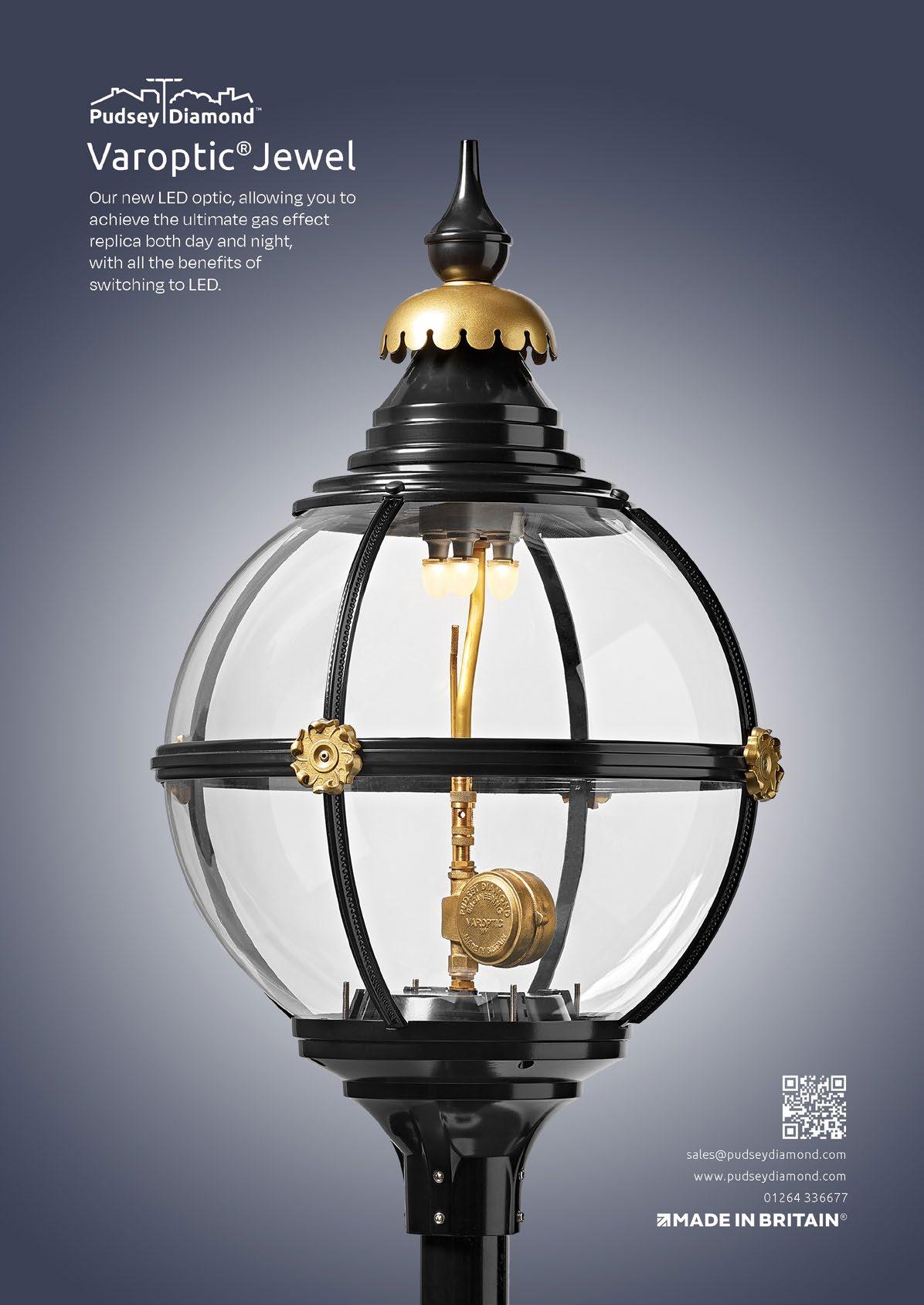
TACKLING VIOLENCE
The ‘Safer Parks Strategy’ is focused on a small group of public spaces and parks within the region of Northumbria. Its aim is to develop an overall review of the existing lighting as well as detailed observations and recommendations for improvements that could be scaled up for other parks in the area
 By Elizabeth Harrison and Paul Brownbridge
By Elizabeth Harrison and Paul Brownbridge
‘I DIDN’T FEEL SAFE. IN FACT, I WAS TERRIFIED. I CARRIED ON WALKING – I HAD NO CHOICE – BUT I PICKED UP THE PACE AND CLUTCHED MY KEYS IN MY FIST. IT WAS A HORRID EXPERIENCE, BUT BY NO MEANS AN EXTRAORDINARY ONE.’
FEBRUARY 2023 LIGHTING JOURNAL 10
A library image of a park, with a walker, at night
Stainton Lighting Design Services (SLDS) was commissioned by the Office of the Police and Crime Commissioner (OPCC) Northumbria to undertake a lighting assessment review, as part of the Safer Parks project.

Police and crime commissioner for Northumbria Kim McGuinness’s vision for this project is improving lives by making public spaces – specifically parks – safer and more inclusive for women, girls, and marginalised groups.
SLDS assessed the existing lighting provision within six parks identified across Northumbria and, where appropriate, made recommendations for improvements to provide a safer, more secure and inclusive environment in line with the vision for the project.
The review was carried out as part of a package of interventions funded by the Home Office ‘Safer Streets Fund’ [1]. This is aimed to encourage earlier reporting, increase data and understanding of the problem, solve the issue by co-designing solutions with owners of public parks and use evidence of what works to scale the solution via a public health approach.
The drive for this came from the Home Office’s ‘Tackling Violence Against Women and Girls’ strategy published in July 2021, which was informed by a call for evidence [2] The government heard directly from the public, amidst a national outpouring of grief because of the tragic murder of Sarah Everard.
More than 180,000 responses were received, with comments making grim reading. A select few are as follows:
• ‘I didn’t feel safe. In fact, I was terrified I carried on walking – I had no choice –but I picked up the pace and clutched my keys in my fist. It was a horrid experience, but by no means an extraordinary one.’
• ‘I don’t think anybody realises the impact [of these crimes] on younger girls and women. I had never felt so lost in my entire life at the time of the abuse. I thought my life would never be the same again. I had devastatingandoverwhelming feelings of distress and desperation. I had suicidal thoughts, I didn’t eat for months, and still have a lot of suppressed feelings.’
• ‘Some forms of violence against women and girls are so commonplace that many women and girls don’t even think they are worth reporting. This is the case for things like being grabbed, touched, and/or threatened by strangers. Thisneedstochange.’
• ‘There needs to be greater recognition that women and girls often feel unsafe on the streets, especially at night or in
parks or on commons etc. This is outrageous. These are our streets, parks, commons…’
Locally, the OPCC heard from communities across Northumbria and found that:
• 30% of respondents felt more unsafe because of one or more of their protected characteristics
• 62% felt unsafe or very unsafe in parks at night
• 89% felt unsafe due to men, boys and groups of people (87% of respondents identified as female)
Comments submitted via the survey from people of the North East reflected similar feelings to those found by the Home Office call for evidence. They referenced concerns about the ‘behaviour and attitudes of young men towards young women’ and indecent exposure in parks.
It was agreed something needed to be done that focused on making changes to address the safety of the environment and behaviours causing those fears.
STARTING POINT
Six local authorities within the Northumbria Police operating area each put forward a park, varying in size, location and design for inclusion in the project. All six are considered urban parks, situated in either densely residential areas or on the edge of the town/city centre.
Each of these parks have their own set of unique characteristics, covering several design aspects and environments. Each park was individually surveyed and commenced by meeting a park representative, from which we asked a series of consistent and categorised questions.
This helped us to obtain a detailed understanding of the day-to-day issues experienced within the park from somebody who had first-hand experience. From here, we conducted a walk-through of the park, with the representative, where we assessed any existing lighting, discussed areas of concern, popular routes, and any additional knowledge of the area.
Most of the survey took place during daylight hours, as this helped us to gain a better perspective and visual awareness. This was followed by a night-time inspection to compare, get a feel for how the space changes after dark and assess whether the space feels safe. Commencing with the consistent set of questions allowed us to gain the same information for each park. A small section can be seen below:
• What is the age demographic of park users after dark?
Lighting and safety
• Are there any current ASB (anti-social behaviour) concerns?
• Is there any existing lighting within park?
• •Are there any areas of overhanging vegetation?
• Does the lighting level seem ok?
• Does uniformity seem ok?
The answers highlighted the primary concerns, aims and desired outcomes for the parks that were to be included within the scope of works. We were also made aware that each park would look to provide the following functions:
• A primary route through the park being the most direct and/or quickest route through
• The proposed installation of a ‘help point’ with communication and CCTV coverage
The survey in each park highlighted a recurring theme. These were largely related to anti-social behaviour (ASB) within all the parks from the extents of vandalism and damage to existing lighting/buildings, fires being started, alcohol and drug use, and large gangs of youths loitering. All of these adding to the general feeling of unease and fear while within certain parks.
These feelings, however, were somewhat mitigated, even if only slightly, where it was felt a good-quality existing lighting design was in place.
This, teamed with other design attributes like open-plan spaces, clear visual awareness, continuously lit walkways, warmer colour temperatures and straight, direct primary routes, led to the consensus of a safer feeling environment.
AIM
The key aim of this proposal is to form recommendations for the implementation of lighting improvements or amendments to the existing lighting system, to provide a safer and more inclusive environment for women, girls, and marginalised groups.
Existing lighting provisions within the park were reviewed to assess the quality of the lighting and aid development of recommendations. Additionally, we considered the extent of the provision of lighting, the routes that should be lit, help points, switching regimes, use of lighting as access or thoroughfare as well as hours of usage, closing of the park and availability of alternate safe routes.
We focused on the lighting to the park and surrounding areas – where the primary function of the lighting installation is to provide a suitable level of illumination to facilitate the safe use for any visitor or staff member. The
www.theilp.org.uk FEBRUARY 2023 LIGHTING JOURNAL 11
Lighting and safety
aim will be to provide enough light to feel aware, comfortable, and able to travel though the park, utilise the facilities and spend any amount of time there safely and securely in the hours of darkness.
We provided options and recommendations for the lighting within the park and suggested any improvements if they were felt to be needed. The main aim was enhancing the overall feel of the park, with the added potential benefits of reducing energy consumption, maintenance and carbon emissions while providing a dynamic and unique lighting installation.
The main point was understanding that safety is key with the approach of the new ‘Safer Streets Standard’ and the recommendations will do everything they can to help improve on the levels of illumination to the park, specified ‘help point’ location, and any additional areas of concern.
For each park, we developed an outline lighting strategy which would assist in the further production of a detailed lighting solution. This would take into consideration environmental and geographical conditions while fulfilling the strategy’s primary function of illuminating the park effectively and sufficiently within the hours of darkness.
Along with this, it would also assist in a well-lit thoroughfare within the park, clear and concise routes, a safe space for the ‘help point’ teamed with any other recommendations that will further improve the project aims.
BENEFITS
The main benefit of the specification is to help provide a safer and more comfortable environment for those travelling through parks within the hours of darkness.
From each assessment and site visit of the area, all have posed different and unique variations of the same question: do these areas feel safe in the hours of darkness and would new or improved lighting help eradicate this?
Improved lighting may be proposed to enhance the general feel, appearance, use and function of the parks. A dynamic and well-thought-out lighting scheme will help to draw the eye of the user to a specific and well-lit route through the park, from entrance to exit safely and securely. In addition to this there are additional benefits of a well-implemented and compliant lighting scheme:
• Improved colour rendering for clearer facial recognition (especially at help point locations)
• Different colour appearance and colour temperature options available to suite several unique schemes
• Variety of optic distributions available to cover multiple circumstances
• Reduction of glare through better aimed and positioned units
• Mitigation of skyglow from existing installations
• Prevention of light trespass
• Less clutter through more directional luminaires
• Substantial energy savings
• Reduced carbon footprint
• Adaptable installations
• Ecological benefits
• Easily maintainable
• Responsible lighting
FINDINGS
It became evident from the assessment that there wouldn’t be a ‘one size fits all’ solution to the lighting within each park, due to a variety of unique characteristics.
For example, different considerations need to be applied if the park is open all night with the lighting operational from dusk till dawn than if the park is shut up, locked and the lighting switched off at closing.
The striking thing highlighted by the night-time surveys was that lighting alone cannot make these parks feel safe. A package of measures will be required to enhance the perception of feeling safe and secure, of which lighting is just one.
There were several common themes that presented themselves throughout the areas assessed. This enabled a set of general recommendations to be developed that could be applied to these and any other park in the area. Our general recommendations were as follows:
• Footpaths should be straight, with as few bends as possible to enable a clear and unrestricted view ahead.
• If footpaths are curved and winding, any vegetation should be thinned to

allow a clear view around the bend to see what is up ahead.
• Where vegetation is growing alongside the footpaths, a strip should be cleared down each side to improve visibility off to the side to remove the feeling of being boxed or walled in.
• Promoting the use of the park by community groups, such as a local running club. It was apparent there is an increased feeling of safety when there are more people around using the park, also vandalism and ASB is less prevalent in more highly foot-trafficked areas.
• Not all routes through the park require to be lit, and it is beneficial to leave areas of darkness for wildlife.
• Main routes through the park should be lit. The main route typically links two or more gates and can be identified as being:
- The most used route through the park.
- The shortest route through the park.
• Once the primary route through the park has been identified, the lighting strategy can be developed. We would recommend:

- A continuously lit route from entrance to exit.
- LED luminaires with a correlated colour temperature (CCT) of no more than 3000K.
- LED luminaires with a colour rendering index (CRI) of at least 70.
- LED luminaires with a range of optics available. This would provide options for the varying footpath widths, areas within the park and the requirement to achieve a controlled amount of spill lighting into the adjacent areas either side of the footpath.
FEBRUARY 2023 LIGHTING JOURNAL www.theilp.org.uk 12
Footpath to Fifth Avenue (a route in one of the parks) by day, left, and how it looks by comparison at night
Illuminated Traffic Post
A high performance LED Illuminated post with an adjustable daytime brightness for enhanced visibility which automatically dims at night.

High performance LED lighting
Adjustable daytime white band
illumination brightness
Night-time dimming

IP 65 sealing to lighting elements
Standard or Hi Viz beacon options
Reflective white bands
Aluminium construction
Available as a complete unit or retro fit onto an existing 76mm post
Suitable for pedestrian and centre island applications

Low maintenance with rapid change fully replaceable parts
Retro fit
The post can be retro fit onto an existing 76mm column meaning no groundworks are required. This enables you to upgrade your existing crossing or centre island without the need for a complete new install. All elements are a modular fit, negating the need to replace the whole unit.
..be Safe
The new go to name for road traffic lighting.

Created by a team with a combined 100 years experience in traffic safety lighting, we have produced a family of value engineered products utilizing the latest technology and manufacturing techniques.

Being part of the FW Thorpe PLC group means we benefit from the resources and global supply chain that keeps us at the forefront of innovation.
Certifications

Complete Unit
The post can be supplied as a complete unit, including base and beacon for both pedestrian and centre island applications.Posts can also be supplied with choice of different beacons, including standard, and high visibility, with or without courtesy shrouds.
We are certified for ISO 9001 - Quality Management System, ISO 14001 - Environmental Management System and ISO 45001 - Health and Safety Management System. We are also proud to be corporate members of the Lighting Industry Association (LIA) and the Institute of Lighting Professionals (ILP). ISO 45001



For more information visit www.portlandtraffic.co.uk or call us on 01922 666725 or email enquiries@portlandtraffic.co.uk

Portland Traffic are a division of Portland Lighting and are part of the FW Thorpe PLC group of companies, working in partnership with TRT Lighting.
Lighting and safety
- Switching off lighting in areas outside of the primary route, leaving only this lit highlighting it as the shortest route to the exit. We would promote facilities are in place to switch this lighting back on in the case of planned events or an emergency.
• Where a park is shut up and locked at a particular time on an evening, we would recommend:
- Lighting should remain in operation at least up until closing time, but preferably a little longer allowing occupants enough time to exit safely.
- Changing the CCT of the LED source to a neutral white up to one hour before closing, to indicate there is a change happening. It was felt a neutral white is less inviting, therefore encouraging occupants to want to leave with the change.
- Adapting the lighting level to begin dimming of the LED source up to one hour before closing, to indicate there is a change happening. Lower lighting levels will be less inviting and naturally make people want to vacate the parks.
• Where a park is open for access all night, we would recommend:
- Lighting should be operational all night from dusk till dawn.
- Where multiple primary routes exist, consider which is the shortest route from entrance to exit and have this route lit to full brightness whilst other routes are dimmed down to a lower level, allowing users to easily see which is the quickest route to the exit.
Dimmed routes could be linked to motion detection that, in the event a user did decide to take one of the other routes, the lighting is brought back up to full brightness to allow safe passage to the exit.
- The area in the immediate vicinity of the help point should have increased lighting levels with good uniformity. The route to and away from the help point should also be lit continuously from the entrance to exit.
- Consider a method of control to apply a different lighting strategy in the event of the help point being activated. An example of this could be that colour-changing light is introduced to identify the quickest route to the help point from the entrance, or quickest route to the exit from the help point, in the event the help point is used. Alternatively, the CCT of the LED source could be changed from 3000K to 4000K to highlight the route.
- Hand in hand with the help point is clear and concise signage. Any emergency responder reacting to a call should be able to pick and follow the quickest route to the person in need of assistance easily and safely.
CONCLUSION
The overall outcome for each park is that any lighting, whether existing or newly proposed, needs to increase the feeling of safety and promote the increase in usage, whilst providing a suitable level of illumination to facilitate safe passage through the park.
From the site visits and the knowledge gained from the park representatives, a concise and useful lighting implementation plan has been developed that can feed into the wider project.
Each of the parks have their own design attributes and varying characteristics, but the issues experienced in each are consistent. The surrounding and adjoining areas and facilities need to be taken into consideration when assessing the lighting provision.
The lighting should be well-controlled, directional, and sited to provide maximum illumination to the intended areas while being unique and tailored to the needs of each park.
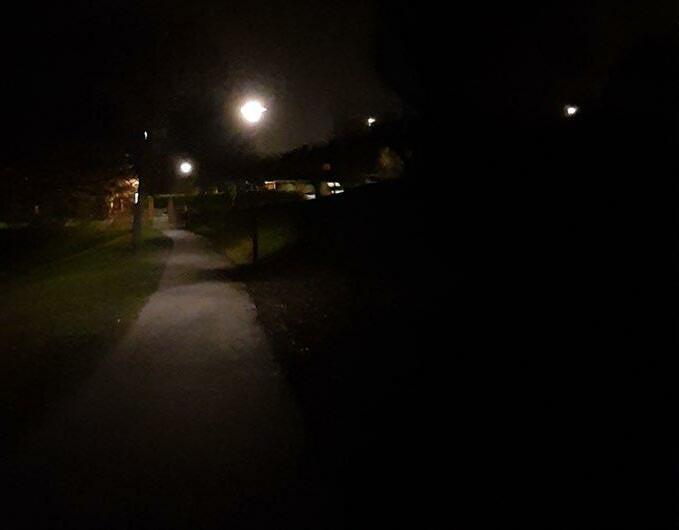
Lighting on its own cannot make the park feel safe, it requires a whole package of measures from a multi-disciplinary approach to enhance the perception of feeling safe in the park environment.
The findings from our study have been reviewed by professor Rachel Pain, from Newcastle University, who led the development of a Safer Parks Standard, research that looks at the key areas to address to improve women’s safety in parks [3].

Elizabeth
[1] ‘Safer Streets Fund continues to make streets safer’, Home Office, July 2022, https:// www.gov.uk/government/news/safer-streets-fund-continues-to-make-streets-safer
[2] ‘Tackling violence against women and girls strategy’, Home Office, July 2021, https:// www.gov.uk/government/publications/tackling-violence-against-women-and-girls-strategy
[3] ‘Safer Parks Standard’, Kim McGuinness, Northumbria Police and Crime Commissioner, and Newcastle University, https://www.ncl.ac.uk/mediav8/gps/files/Northumbria%20 Safer%20Parks%20Standard%20FINAL%20DESIGNED_compressed.pdf
The footpath to Kings Road by day, left, and how it then looks and feels at night
Harrison BA(Hons) is lighting designer and Paul Brownbridge IEng MILP is lighting engineer at Stainton Lighting Design Services
FEBRUARY 2023 LIGHTING JOURNAL www.theilp.org.uk 14

NATURAL HABITAT
Worcestershire County
Council’s rapid LED rollout programme is both a response to the energy crisis and an opportunity to tackle the adverse impacts of artificial lighting at night on bats, flora and fauna. It also has synergies with the recently launched ROLAN manifesto [1]
By Cody Levine and Stuart Morton
As ILP members familiar with Worcestershire will know, it is predominantly a rural county, but with several urbanised town centres and Worcester City itself.
Street lighting provision is centred around urbanised areas, some major A-roads and the primary links to motorway networks; many of the A-roads are unilluminated.

The county is home to two Areas of Outstanding Natural Beauty: the Cotswolds and the Malvern Hills.
It is also home to the largest woodland national nature reserve in the country, the Wyre Forest. In fact, Worcestershire is believed to support 17 of the 18 species of bats thought resident in the UK, with increasing populations of light-intolerant species, such as Lesser and Greater Horseshoes.
In part as a response to unprecedented rising energy costs, Worcestershire County Council (WCC) is committed to investing £6m in its 2022-23 ‘Rapid LED Roll-out’ (RLR) programme.
However, alongside this focus on energy, the programme is also enabling the council to respond to the considerable evidence base illustrating the adverse impacts of artificial lighting at night (ALAN) on flora and fauna, and more specifically by high-intensity and blue light emitted by LED light sources.
FEBRUARY 2023 LIGHTING JOURNAL 16
The Signify/Clearfield Red LED lighting install, showing the A4440 Trotshill Way near Worcester. Image courtesy of Jacobs
To that end, the RLR programme offers an opportunity to evaluate landscape-scale effects of transitioning to a modern LED street lighting inventory. Additionally, RLR also provides opportunities to trial effects of multiple ‘warmer’ lighting spectra as ALAN mitigation measures.
PROGRAMME APPROACH
The upgrade to LED is anticipated to modify existing ALAN’s interaction with flora and fauna. By evaluating changes in bat activity, an inference can be made of wider faunal and floral impact, with bat populations effectively acting as a proxy indicator for the cohesion, resilience and health of ecological networks.
The underpinning environmental data was provided by WCC in conjunction with the Worcestershire Biological Record Centre and Worcestershire Bat Group. The modelled distribution of each existing conventional luminaire was spatially mapped over the county’s habitat inventory [2].

This identifies ecological networks using a ‘least-cost’ distance analysis of the known and predicted ‘priority habitats’ (as listed under S.41 of the 2006 Natural Environment and Rural Communities Act).
Street lighting that was considered likely to interact with the county’s ecological networks was then assessed using multiple scoring criteria to gauge the risk of severance/ deterioration effects. Mapping, monitoring, and assessment of existing lighting levels and proposed lighting calculations were undertaken. This is shown in figure 1 above.
Following desktop analysis, a site-by-site evaluation of RLR’s ‘triaged’ street lighting columns was undertaken by WCC’s ecologist in collaboration with Jacobs. This was to verify the results and to identify opportunities for mitigation and/or enhancement through blue light reduction.
Bats and lighting
Jacobs tempered these requirements by reducing light levels in line with British Standards.
Research on the effectiveness of red and amber lighting treatments continues across the UK and Europe. Locally since 2018, WCC has adopted multiple ‘reduced impact on bats’ streetlighting schemes including the first highway use of Signify’s ‘high red’ correlated colour temperature (CCT) recipe in the UK [3]

The authority has nonetheless struggled satisfactorily to control experimental variables in monitoring effectiveness of these mitigation strategies.
To minimise predicted impacts of blue
light, three ‘warmer’ CCT spectra were selected:
• Monochromatic ‘red’ Clearfield (1000K) (figure 5, A4440 Trotshill Way install)
• Phosphor converted TRT Lighting Aspect lanterns with (PC) ‘amber’ (1750K) (figure 4, Dugdale Drive install)
• ‘Warm white’ (3000K)
This simplified colour palette gives the RLR programme opportunity to test effects on abundance and diversity of bat species of three lighting spectra.

 Figure 2. Spectral distribution of monochromatic ‘red’ LED Clearfield solution (graphic courtesy of Signify))
Figure 3. Comparisons of spectral distribution of multiple CCTs (graphic courtesy of TRT Lighting). This illustrates the reductions in blue light peaks possible through use of warmer CCTs
Figure 2. Spectral distribution of monochromatic ‘red’ LED Clearfield solution (graphic courtesy of Signify))
Figure 3. Comparisons of spectral distribution of multiple CCTs (graphic courtesy of TRT Lighting). This illustrates the reductions in blue light peaks possible through use of warmer CCTs
www.theilp.org.uk FEBRUARY 2023 LIGHTING JOURNAL 17
Figure 1. An illustration of some of the mapping, monitoring, and assessment of existing lighting levels. Street lighting interacts here with a broadleaved woodland component of the local ecological network. (Image © Crown copyright and database rights 2023 Ordnance Survey 100024230, © Getmapping Plc and Bluesky International Limited 2023)
Bats and lighting
Street lighting columns were then separated into four discrete categories and the following mitigation approaches were deployed.
PROGRAMME MONITORING
WCC continues to study its existing ALAN mitigation sites, but the RLR programme offers an opportunity to establish frameworks for managing and evaluating effects of ALAN at landscape-scales.
A subset of six sample sites was selected, representative of urban, peri-urban and rural lighting contexts (monitoring the effectiveness of the mitigation approach at a whole-county scale would be prohibitively expensive).
Two replicates were monitored of each LED treatment: ‘red’, ‘amber’ and ‘warm white’. One Wildlife Acoustic Song Meter Mini was installed per site, making use of extended battery compartments and 128gb SD cards for their long-term deployment.
Ultrasound recordings were captured over five nights per month during July to October 2022, with recording due to recommence in May to June 2023 to establish a measure of baseline bat activity and diversity. The upgrade to LED lighting treatments for the sample sites is scheduled for early July 2023.
Post-installation monitoring is scheduled for July to October 2023, recommencing in May to June 2024.
By sampling in spring, summer and autumn over multiple years, we hope to capture seasonal variations in colony behaviour and abrogate risks of inclement weather or other energy saving initiatives potentially skewing results.
The core objective of monitoring is to evaluate impacts (positive or negative) of each LED treatment on bats, as a proxy of the health of ecological networks, and subsequently to infer effects of the county-wide upgrade and CCT mitigation approaches deployed. We anticipate publishing findings in winter 2024/25.
PROGRAMME BENEFITS
In line with Worcestershire County Council’s
net-zero goals, this investment reduced risk to the energy revenue budget by lowering energy consumption (by circa 49%) and direct carbon emissions.
The investment will reduce indirect carbon emissions incurred by the maintenance team due to the nature of LEDs typically lasting significantly longer than conventional lamps.
The findings of each mitigation measure’s efficacy will allow refinement of criteria used in our framework to determine their deployment and improve future conservation outcomes.
SUMMARY
Landscape-scale strategic planning of LED deployment is key for successful delivery of biodiversity mitigation.
It’s important to integrate mitigation monitoring in scheme design, and to ensure this is proportional to the scale of predicted impacts.
It’s also vital to understand and help clients articulate the environmental versus the economic case; the cost/benefits of street light management.

Finally, the project allowed us to explore opportunities and find benefits through inter-disciplinary collaboration. Wherever possible, we encourage practitioners to share
research and findings with practitioners across the sector and wider industries.
THANKS
With thanks to all involved in the project at Worcestershire County Council, Jacobs, Prysmian, Signify, TRT Lighting, Worcestershire Biological Records Centre, and Worcestershire Bat Group.
UPDATED GUIDANCE
At the time of publishing, it is understood this case study will form part of the updated Bat Conservation Trust and ILP Guidance Note 08/23 Bats and artificial lightingintheUK. Part of the Batsandthe Built Environment series, the GN is due for publication at the end of this month (February).
The current iteration of the guidance is available by scanning the QR code
[1] The Responsible Outdoor Lighting At Night (ROLAN) Manifesto, www.darksky.org/wpcontent/uploads/bsk-pdf-manager/2022/12/ROLAN-manifesto- white-background_lowres.pdf [2] ‘Worcestershire Habitat Inventory’, Worcestershire County Council, https:// www.worcestershire.gov.uk/info/20302/worcestershire_ habitat_inventory [3] Signify white paper ‘Reducing impact on night behaviour nocturnal mammals: outdoor LED light recipe for bats’, with further information also here: http:// images.philips.com/is/content/ PhilipsConsumer/PDFDownloads/Global/Products/ ODLI20181228_001-UPD-en_AAOutdoor-LED-light-recipe-recipe-for-bats.pdf
Table 1. Severance and mitigation rationale
FEBRUARY 2023 LIGHTING JOURNAL www.theilp.org.uk 18
Cody Levine MCIEEM CEcol CEnv is ecology team lead at Worcestershire County Council and Stuart Morton EngTech AMILP is professional head of aviation and highway electrical design at Jacobs
Severance
Columns scoped % Mitigation approach
rationale summary
1 99 1% 1000K CCT (‘red’), shielded
Illuminated highway crosses a statutory or non-statutory site designated for its nature conservation value, and/or is located in proximity to a known bat roost (ie where modelled lighting distribution is deemed reasonably likely to interact with a historically recorded bat roost).
2,499 26.6% 1750 CCT (‘phosphor
shielded
2 An illuminated highway located in an urbanised environment bounds a statutory or non-statutory designated site, a watercourse, waterbody or woodland.
coated amber’),
829 8.8% 3000K
3 An illuminated highway crosses or bounds any other priority habitat
CCT
(‘warm white’), shielded
5,953 63.4% 3000K
4 For expediency, all other RLR street lighting is considered less likely to pose significant/notable adverse effects on known receptors.
CCT
(‘warm white’), unshielded
PROTECT flora and fauna with PC-Amber solutions






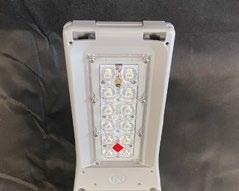


LEEDS or Bats

When converting to LED lighting, we have to consider the environment in which they will be installed and part of the process includes ecological reviews to ensure we minimise any negative impact on flora and fauna.
One of the common challenges is to identify an LED light source which has ecological benefits by minimising blue light content while at the same time delivering significant energy savings and still achieving appropriate lighting standards.





PC-Amber LEDs provide an excellent solution to this challenge, as recently demonstrated on the Worcestershire RLR Project, and are available in a number of TRT’s luminaires:

www.theilp.org.uk
For more information www.trtlighting.co.uk +44 (0) 1527 521 162 INNOVATE | INTEGRATE | ILLUMINATE Aspect Eco Aspect Via Optio Micro Optio Midi Optio Nano
Image: Recently installed TRT PC-Amber lanterns for the Worcestershire RLR Project © Photograph courtesy of Jacobs.
STEWARDS OF NATURE
Lighting designer Chiara Carucci’s experience in lighting the Collepardo Caves near Rome has taught her some important lessons on what is – and isn’t – ‘bat-friendly’ lighting
 By Chiara Carucci
By Chiara Carucci
Back in 2021, I was privileged to have my project to light the Collepardo Caves near Rome featured in arc magazine [1]
The project, to recap, saw me design and supervise the installation of a new lighting scheme for the tourist-attraction caves. Working for Lazio region and LAZIOCrea, under the supervision of the Natural and Cultural Heritage department, it was a scheme that not only brought a sense of mystique but, even more importantly, contributes to raise awareness and protects its hugely delicate ecosystem.
The caves are classed as an SIC or ‘site of community importance’, since they are home to at least five species of bats – as well as showing archaeological findings and geological features. This cultural and natural heritage site is open to the public, especially for education purposes.
Among other issues, we had to ensure the new lighting limited the ecological problem of ‘lampenflora’. Beyond the aesthetical damage, lampenflora causes deterioration and structural changes, and therefore it represents a serious issue for the ecosystem of the caves.
Working closely with local managers, guides, the in-house chiropterlogist, and three researchers, I tested and specified
solutions (for example fixtures to be installed far from speleothems, mineral formations), relying on perception and storytelling (setting different scenes), than usual techniques.
‘PURPOSEFULLY’ DARK
To protect the caves, we worked to keep the lighting deliberately minimal, and purposefully dark, with low luminance and high-quality control systems.
While the original article covered the description of the project itself, here we share our lessons learned, also from ongoing research and feedback, with the hope of enriching and raising the bar for heritage and ‘bat-friendly’ lighting.
FEBRUARY 2023 LIGHTING JOURNAL 20
Giovanni Mastrobuoni, the in-house chiropterlogist, has continued visiting and counting the chiroptera population in the caves once a month. His regular feedback continues to be very positive, alongside those by one of the researchers, specialist for bats, Leonardo Ancillotto.
Giovanni enthusiastically illustrated the new lighting system to local and national TV, even after the grand opening, remarking how the lighting design improved bats’ living situation, compared to the past. In fact, chiroptera are inhabiting more areas of the cave as a result and, especially now, hibernating.
Professor Jo De Waele, of the Italian Institute of Speleology within the University of Bologna’s Department of Biological,
Bats and lighting
biofilms are still visible, but now brownish in colour due to degradation.
‘These results are excellent and surprising: we hope to be very close to the solution (for lampenflora as an ecological problem). However, the solution may not be definitive: there is still much to understand about the physiology of these microbial communities, defined as “alien” in underground ecosystems.’
Liliana Mannocchi, on behalf of the client and local managers, said: ‘This project has contributed to increasing the number of visits, already growing thanks to the management of the Lazio Region, through its in-house company LAZIOcrea and their artistic-cultural programme (in addition to the permanent offer of guided tours). Visitors continue to appreciate the results of this project, which has reduced energy consumption and minimized the impact on biodiversity.’
PROJECT REFLECTIONS
My own reflections from this project come down to the following learning points:
• Explaining the concept of a project such as this to the client is usually very complex, almost impossible in this context, if not with a full-scale test lighting. Consequently, giving feedback on site, the stakeholders feel part of the decision process, start to feel ‘owners’ of the project. This helps for keeping the scheme on track, and well-maintained.
Geological and Environmental Sciences, taught me how to identify the relevant formations and how to reduce the impact for installation.
His feedback was equally positive: ‘In general, people try to light up underground spaces like cathedrals… that is a mistake in my opinion. You allowed even the dark “to speak”, and highlighted peculiar features of this cave – like the lines and the detachment fault (the fault plane), not just the obvious speleothems – creating a good visiting experience and basis for people’s education,’ he told me.
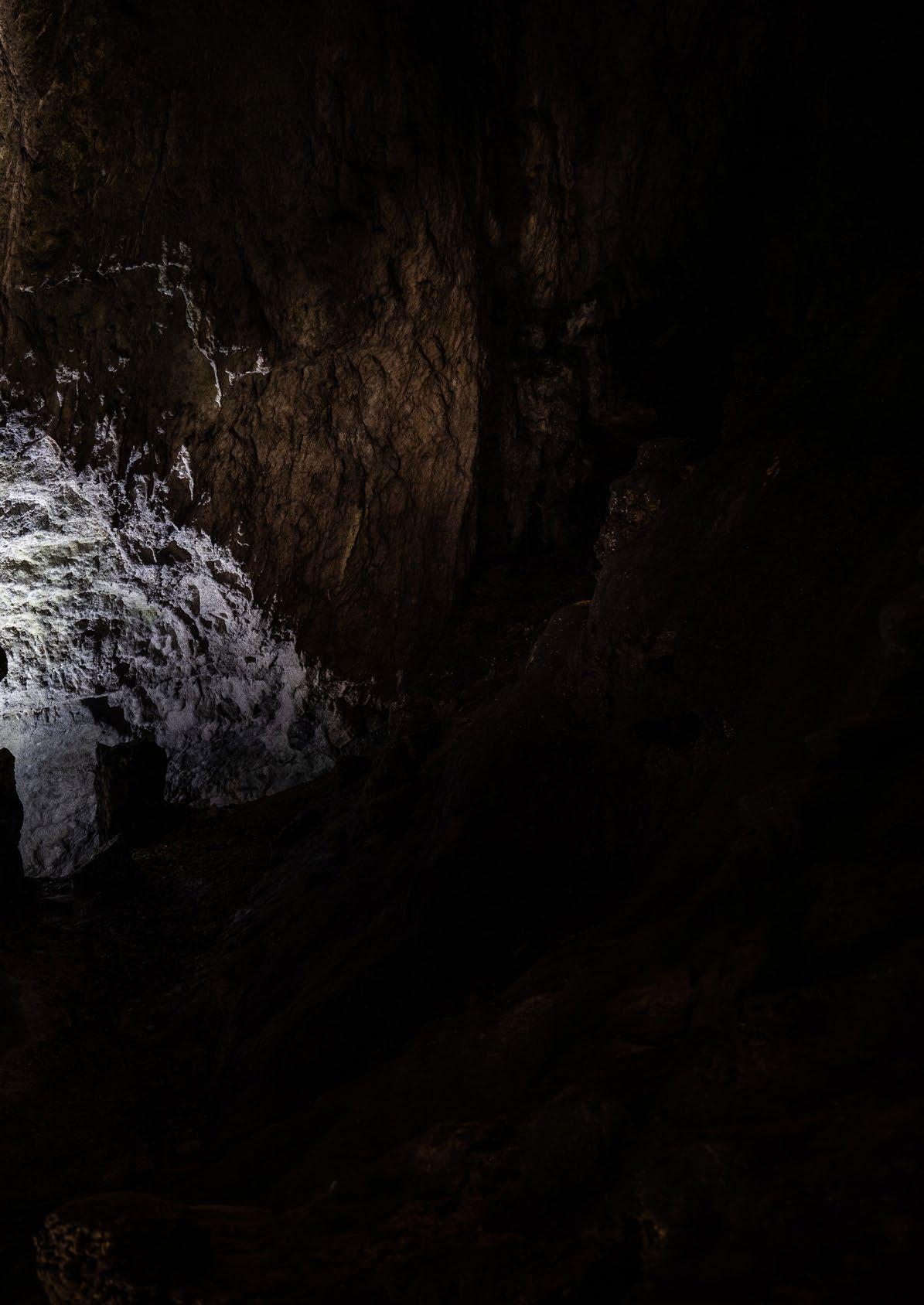
Rosangela Addesso, PhD, specialising in lampenflora, discussed with me the use of specific wavelengths that could hypothetically reduce lampenflora. After careful evaluation, we agreed to work on three parameters for the lighting fixtures: distance, low intensity, and time of operation.
Visiting the site, she said: ‘Just six months from the installation of the new lighting system – also following a few months for the building site, when the lights were mostly off – we found a reduction of lampenflora of more than 80%, with few areas where
• Designing for a harsh environment (the cave’s environment is more corrosive than the ocean’s) is not only related to the choice of materials. For example, we used SAE 316L marinegrade stainless steel and ourselves designed installation accessories. Care should also be given to the methods for installation, for example, reducing the time of exposure for cables. In fact, allochthonous material can undergo harmful degradation processes and affect the longevity of the project.
• Care and appropriate time planning should be given to the construction process. Here, for example, the building site was planned in relation to chiroptera’s phenological phases, in other words starting after hibernation and concluding before the nursery.
• Building site management, naturally, is challenging in this sort of environment. So, aim to collaborate with the client in setting the requisites for contractors (previous experience, tasks and so on), not only for procurement.
www.theilp.org.uk FEBRUARY 2023 LIGHTING JOURNAL 21
Bats and lighting
• Communication is key for raising awareness and for education, not only for marketing purposes. For example, the valuable collaboration with professional photographers should be planned and discussed with the client in advance.
• Collaboration is the way to go. Consult experts and work in multidisciplinary teams, in order to learning for oneself and improving the project, besides avoiding mistakes from the start.
KEY CONSIDERATIONS
Therefore, I would like to share some takeways for other exterior projects.
First, as lighting professionals, we have both an opportunity and a responsibility to act as a protector of resources and of the environment. We should strive to be making or encouraging decisions that consider the effect of light on all living items, now and in the future.
Therefore, on this sort of project it is vital to collaborate with researchers, as well as identify stakeholders and ‘local heroes’. Building partnerships is as important as identifying goals for the project. Ultimately working with – and as part of – a multidisciplinary, genuinely collaborative team will actually make you save time.
Second, when or if clients say ‘there isn’t enough budget’ to consult experts that, simply, isn’t (or shouldn’t) be true. Sometimes it’s enough to call your local cultural heritage or conservation department or contact a local environmental association. Their advice is usually free of charge.
Otherwise, if you have the chance, ask for an offer to researchers: their fees will often be
less expensive than you may think.
Ultimately, if you really do not have time to incorporate others’ suggestions in your design, you have probably set the timeline and budget wrong! As designers, we should also be able to admit a mistake, rather than delivering at all costs. Next time, you may want to consider involving a lighting designer (as an expert and/or project manager) who can deal with multidisciplinary projects.
Many heritage sites around the world (including, but not limited to, monuments) are nowadays exhibited almost like a movie set. It’s all about the tourism, with biodiversity often down the priority list.
I believe that limiting spill light is not enough. As lighting professionals, we have to be brave enough to argue the case for somewhere not to be lit, for silence or darkness to be a preferable choice (especially if the alternative will be of poor quality).
On that note, heritage sites, especially natural environments like touristic caves,


cannot be lit like an amusement park, not even for seasonal or event lighting. The inevitable compromises between conservation and touristic needs should be found somewhere else.
As lighting designers, we can, however, create special settings for different times of the year, albeit avoiding coloured light or strong intensity variations, especially if there are nocturnal animals close to the site.
I realise this may be controversial with some ILP members, but I believe that it isn’t worth investing in red (monochromatic) lighting fixtures, sometimes seen as ‘bat friendly’.
Why? Well, we should not only consider the effect of light at night on mammals but, especially far from cities, on all living items. For example, vegetation can be severely damaged by the red part of the spectrum, as reported by several researchers.
Trees that are sensitive to day length, and those that require a long period of darkness
FEBRUARY 2023 LIGHTING JOURNAL www.theilp.org.uk 22
The new lighting scheme in the Collepardo Caves Caves, outside Rome. All images, including main image on the previous page, by Jansin & Hammarling




www.theilp.org.uk FEBRUARY 2023 LIGHTING JOURNAL 23 Urbis Schréder www urbis-schreder com Celebrating 50 years in the lighting industry. #letsgetconnected Looking forward to a smarter and more sustainable future. Urbis Schréder, the LOGICAL partner for all things lighting and beyond. Contact us at: sales@urbis-schreder.com
Bats and lighting
are negatively affected by the continuous lighting especially if the fixtures are mostly in the red (625 nm to 760 nm) or in the infrared range.
Bats perceive red, even if some species perceive it less than other parts of the spectrum. Several species of bats, nevertheless, are known to have functional long-wavelength-sensitive ‘opsins’. Opsins are proteins that bind to light-reactive chemicals to underlie vision, circadian rhythm, and other light-mediated responses of organisms.
Several species of bats fly close to lights as a result of the accumulation of insects that are first attracted to the light sources. Artificial light can also impair the defence mechanisms of moth species, so facilitating some bats’ foraging. However, not all insects are less sensitive to red, on the contrary mosquitoes are attracted, as several studies report.
Birds are only theoretically less sensitive to red light at night. Much long-distance bird migration happens at night. Many nocturnally migrating birds die or lose a large amount of their energy reserves during migration as a result of encountering artificial light.
Some studies have shown birds becoming disoriented and attracted by red and white light (containing visible long-wavelength radiation). Whereas they may be less disoriented by blue and green light. Therefore, in the context of bird migration it is arguable that red light should be avoided, at least during migratory season, especially with overcast sky.
Red lights cannot show properly the coat (or fur) of several mammals. This can mean drivers may not perceive them when they are crossing a road, especially since the verges will often be dark.
Generally speaking, especially where safety and security are at stake, I would avoid red.
Finally, studies on artificial lighting at night (ALAN) are not always consistent. As Annika K Jägerbrand of Halmstad University, Sweden, and others have highlighted, there can be a lack of a unified method to measure the effects of ALAN.
SUMMARY
Red ‘bat-friendly’ lighting sounds great in principle. But, to my mind, it can be limited as a ‘solution’ and certainly should not be seen as a panacea.
There are multiple other factors lighting professionals need to take into consideration when lighting ecologically sensitive exterior sites at night. Do not just copy and paste solutions; tailored projects are the most sutainable and valuable.

Consider light-motion sensors that automatically dim-down during the off-peak hours. This will of course have the added
benefit that clients will save on energy bills, making the luminaires adjust their lumen output based on the presence of pedestrians, bicycles or cars. However, it also goes without saying that this choice must be integrated into the broader lighting design, for example including safety concerns and escape routes. Make guidelines and guidance your friend – but not your only friend. The ILP with its GN08 guidance proved to be at the forefront of best practice around bat-friendly lighting and spot on – and we await the updated version of this guidance with interest [2].
However, as GN08 says in chapter three: ‘Effective mitigation of lighting impacts on bats depends on close collaboration from the outset between multiple disciplines within a project.’
Therefore – and finally – with any project like this, before evaluating mitigating
measures it is imperative to consult the experts – local stakeholders and researchers,
environmental scientists or other specialists.
Study the context and get information on the local population of bats and their habits. Keep ’stewardship’ in mind. Suggest (quality) lighting only where and when really needed; and be brave enough to say no lighting is actually the answer here.
ecologists,
[1] ‘Cave of wonders’, arc, [d]arc media, August-September 2021 (123) [2] GN08 ‘Bats and artificial lighting in the UK’, in association with the Bat Conservation Trust, is available by scanning the QR code https://theilp.org.uk/publication/guidance-note-8-bats-andartificial-lighting/
FEBRUARY 2023 LIGHTING JOURNAL www.theilp.org.uk 24
Chiara Carucci, IALD Associate, is an award-winning independent lighting designer based in Stockholm, Sweden and Salerno, Italy
Connected
Highways
Urban Control UK Connecting Spaces
The Urban Control Cellular Node simply plugs-in to a standard Zhaga socket and connects over the latest cellular networks designed for the Internet of Things (IoT) NB-IoT and LTE-M.


These networks offer far greater signal penetration than regular 4G, so they can connect streetlights in any setting
With no network to deploy and scaling from a single luminaire to full authority wide deployments, the plug-and-play solution brings carbon and energy saving benefits to your intelligent lighting projects and new builds.
Get in touch today at urban-control.co.uk

www.theilp.org.uk
MEET AND GREET

FEBRUARY 2023 LIGHTING JOURNAL 26
A misjudged revamp just three years ago had left the ‘MEET’ food court in Stockholm’s Kista Galleria as a rather unwelcoming, bland, hangarlike space. But the fact the fixtures were so new, and of high quality, meant the subsequent refurbishment was able to be achieved without throwing away a single light
By Beata Denton
Kista Galleria is a shopping mall located in the Kista Science City in Stockholm in Sweden, home to a wide array of IT and high-tech companies. It has 185 stores plus a multiplex, bowling alley, karting track, restaurant and, most importantly for the purposes of this article, a central food court.
The ‘MEET’ food court dining area is located in the centre of the mall, with food stalls located on either side of the central seating and passage area.
The idea of it, much like many shopping mall food courts in the UK, is to be a destination for shoppers to come to break, regroup, chat and then, ideally, head back to the shops.
The Kista Galleria is also popular with families and, in fact, the MEET food court even has a reputation as a place to spend time and eat out of an evening.
‘MOTORWAY’ FEEL
However, a previous refurbishment had left the food court as a cold, grey space that was not at all welcoming. Homogeneous, harsh uplighting left diners feeling exposed; a single linear LED ran right across the ceiling space, making it feel more like a motorway – a space you passed through – rather than somewhere you might want to stop, socialise or rest.
The ceiling is made up of chevron-shaped white metal panels, again quite harsh to eye. Then an array of different-length downlight profiles meant all the light on to the diners came from above.
This created a flat, very even, uniform ambience, one without any contrast or place-making; a space lacking in intimacy and definitely not the sort of living room-feel the centre’s owners had been aiming for. In fact, all in all, it was pretty grim.
Therefore, at the beginning of 2019 they came to us at Reform to see how we might be able to help refresh and transform the space. Initially, they approached our interiors studio, as they thought it was an interiors project, with the furnishings and interior design

Retail lighting
needing to be rethought. At that time, the interiors team was super busy, and so they came back saying they didn’t have the capacity to take on it on, especially as it was going to be a competitive tendering process for the work.
At that point, however, I took a look at it and realised that, rather than being an interiors project, it was really much more simply a lighting project. I could see that, if they wanted to change the atmosphere, while, yes, the furniture could do with being changed, the most important part was simply rethinking the lighting.
So I said I would give it a go. We put together a team – me and my co-lighting designer Maria and one of the architects from the interiors team. We went to meet the client and had a briefing on what they wanted.
It was clear they wanted warmth, a homely atmosphere, in essence for it to feel like a living room, somewhere people would want to stay and sit for longer. They wanted it to feel cosy and protected, somewhere you would actively choose to go to with friends or hang out as well as a shopping destination.
At that meeting it also became clear that a) the project was not going to have a super big budget and b) how new all the fittings and furniture actually were. What’s more, once we had got a full list of the fittings, we realised they were actually very good; there was good light quality from them. It was just the way they were being used that was wrong for the space. We did a concept and were successful in winning the project.
REUSING FIXTURES AND FITTINGS
That realisation on the fittings immediately got us excited because it meant we potentially had an opportunity to overhaul the space –but without losing or throwing out a single light.
We originally assumed we’d want to change the general colour temperature from 3000K to 2700K. But, questioning our own assumption – and focusing again on the idea of reuse – we decided that the existing 3000K could in fact work, with the light being reflected off the new warm materials and greenery.
So, that was how we approached the project. We designed a new layout for the space, seating arrangements, and the better grouping of sofas into groups. We proposed to use materials that could create a warmer feel, so adding oak, hardy textiles, and some greenery. The seating had been based around benches, so we looked at how we could take things back so that people were more in groups, more intimate in the space.
When it came to the lighting, the limitations of the budget meant that, since the fittings were good, we had to think creatively about how, simply, the lighting could be better
FEBRUARY 2023 LIGHTING JOURNAL 27 www.theilp.org.uk
The new, much more welcoming, lighting scheme at the MEET food court in the Kista Galleria, Stockholm
Retail lighting
used, controlled or positioned.
For example, while we didn’t like the ceiling panels, there was no way we would be able to replace them. The solution was to make them less visible. Initially we decided to demount the LED strip uplights and use them in our designs for room dividers and fitted in furniture. They would have worked perfectly for that purpose, so we were really happy about that smart reuse.
Unfortunately, however, it proved too costly to demount them. There were complications with the sprinkler system that meant it was going to be too difficult to get above the ceiling to take them down.
So, was there an alternative ‘reuse’ solution? We had a programmer who was testing everything and so we asked what if we leave them and we just dimmed them down to 5% to 10%? And that worked really well, definitely better than completely getting rid of them. It now really adds something to the space; there’s now just a tiny hint of uplight but it enables you to forget – or overlook – the white, cold metal of the ceiling.
With the downlight profiles, there were some 30 different-length profiles. We made a list of every one of them, how long each was and where the downlight was positioned in it, in order to be able to reuse it. We had the builders mark every one of them with a number in order to put them back in a new way that would suit the new layout.
They were then all taken down and refitted, so they ran straight across the space and underneath the ceiling panels instead as fitted into the chevron pattern. We positioned the profiles in order to make the downlights mark tables, passages and the tray-collecting stands – only where needed, not as a general light.
We didn’t want all the light to be coming from above; we wanted to create more of a sense of intimacy in the space. So, we added 25 narrow-beam cylindrical pendants, with high recessed lightsources and no glare, meaning the light is much more directional, landing where it’s wanted on the tables. We also added low in-furniture lighting, including new (unfortunately, given how much we simply wanted to reuse) LED strips and decorative LED sticks. With the long ‘motorway’ ceiling linear light, because it was so bright and glary, we made the decision the best thing was to leave it where it was but just turn it off. It’s now used just for cleaning and maintenance, almost as a task light.
EDUCATING THE CLIENT
The lesson or learning point for us was the satisfaction we felt in achieving this revamp with existing fixtures. The client was only too happy with this solution, since it saved them money, and it usually comes down to that in the end. They actually felt really bad having to
throw out their recent scheme, but when they launched the revamp project they saw no option.
We didn’t set out to do a reuse project. But we just felt it was so incredibly wrong to throw out such good lighting. And when we started to look into it and we realised we could reuse so many elements, we got really excited about the project.
Within this, it is important to recognise that there can be an important educational process for the client. For this project, the client had simply assumed it would need to be a case of new furniture and layout and possibly nice-looking designer pendants. They hadn’t even set out thinking it was going to be a lighting scheme anyway.
To their credit, they were incredibly quick to take in what we said and go with it, that it was how the light was being used and placed in the space, rather than necessarily the fixtures themselves, that was going to make the whole difference in the atmosphere.

And the result? It has all worked brilliantly, I am pleased to say. I’m super proud of the fact we managed to reuse light fittings and totally change the indoor environment at the same time. In fact, even the furniture that we replaced hasn’t been thrown out but repurposed and used elsewhere within the centre.
The client is very happy and all the food stall owners around the space, they just love it. It is now much more of an inviting, welcoming space and people sit there all time of day; it is very busy in the evening now too.

PROJECT CREDITS
Client: Citycon AB
Lighting design: Reform (with the team comprising Beata Denton, Maria Vrekou, and interior design Mathilda Clahr)
Beata Denton is lead lighting designer at Reform architectural practice in Stockholm, Sweden
FEBRUARY 2023 LIGHTING JOURNAL www.theilp.org.uk 28
The cold and hangar-like space before, compared to the space once the new scheme was complete, below
Surge Protection for Street Lighting


Protecting Street Lighting
A well-designed surge protection system incorporated into critical infrastructure such as street lighting systems can safeguard assets against damage and failure, preventing interruption to services and protect both road users and pedestrians.

System design
Charles Endirect’s background in the design and manufacture of street lighting equipment, together with their technical expertise, will ensure the system they incorporate into your scheme will have the capability to provide the protection you need and give maximum service life.

www.theilp.org.uk Wessex Way, Wincanton Business Park, Wincanton, Somerset, BA9 9RR Company reg no 1855059 England +44 (0)1963 828 400 - info@charlesendirect.com - www.charlesendirect.com
Authorities are starting to make the inclusion of surge protection mandatory in their new LED street lighting schemes
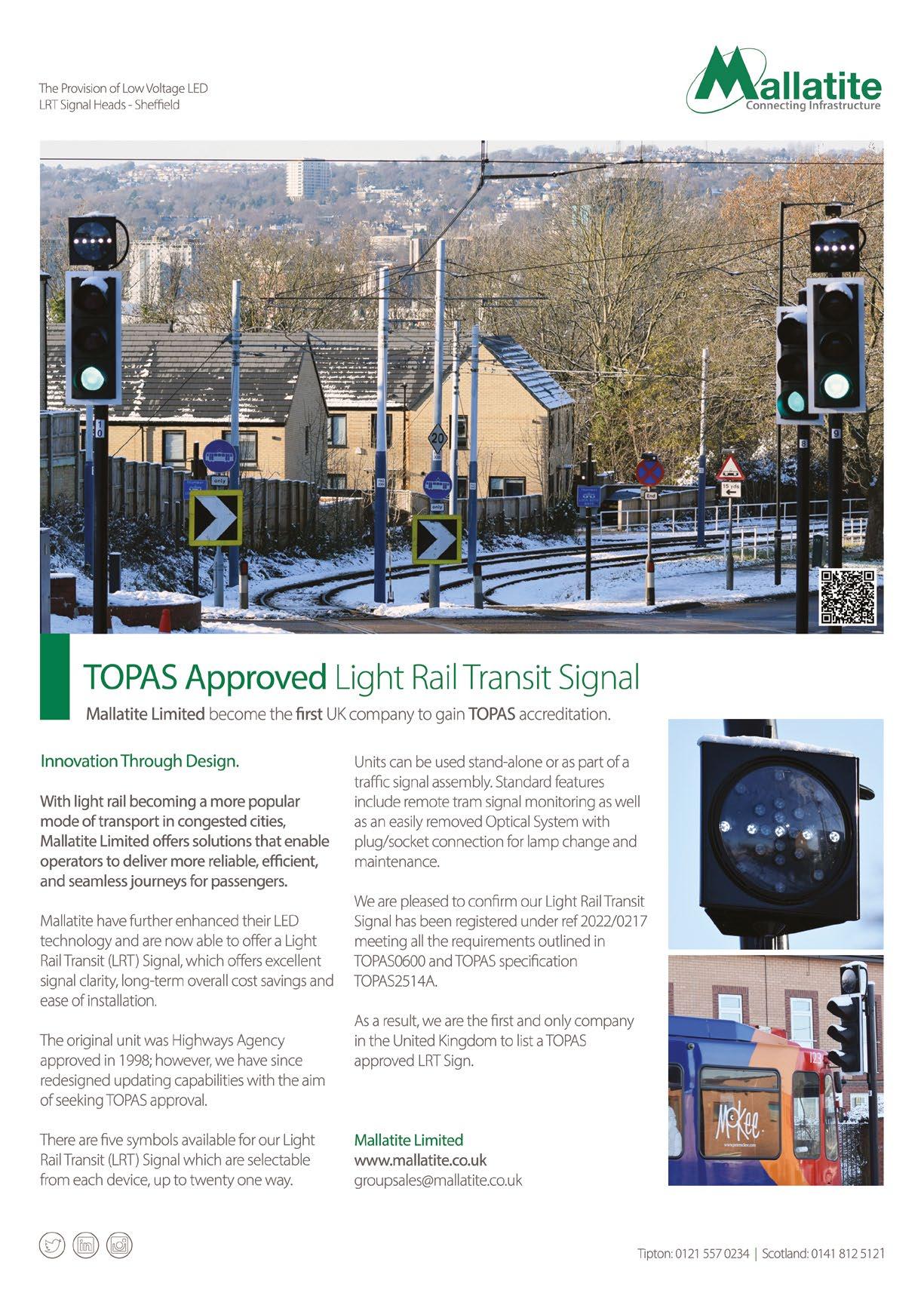
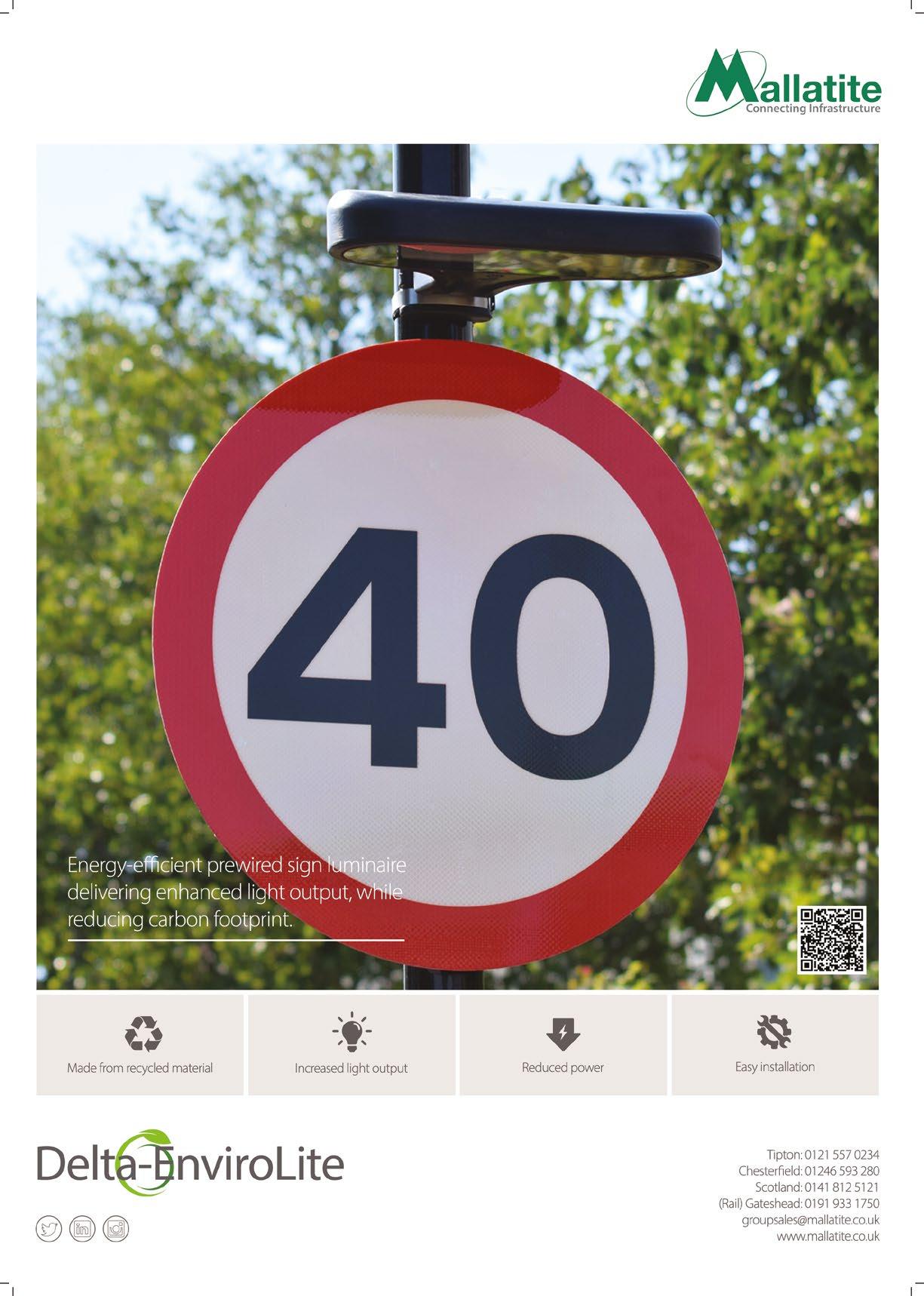


The increasing urgency of the climate crisis requires everybody to act now and change the way we produce and consume. Metrics and tools such as CIBSE’s TM66 can now provide a valuable route map for lighting professionals
 By Dr Irene Mazzei
By Dr Irene Mazzei

FEBRUARY 2023 LIGHTING JOURNAL 32
Since the start of the last century, unregulated human activities have contributed to the emission of large amounts of greenhouse gases (GHGs) into the atmosphere.
These can absorb radiation, with the result of making the Earth’s surface warmer (‘Global Warming Phenomenon’, GWP).

Climate models have predicted that a scenario corresponding to the lowest allowed temperature variation (+1.5 °C) is only achievable through a decrease of CO2 emissions, targeting net zero by 2050 [1], which was the target set in 2015 with the Paris Agreement.
The latest report by the UN Climate Change Committee shows that, despite some initial positive outcomes, the efforts to limit global temperature increase are still insufficient [2]
These alarming findings are pushing policymakers to take urgent action in implementing sustainability strategies to control and reduce the level of emissions.
Within the framework of the European Green Deal, initiatives are being put in place with the aim of reducing the emissions of various sectors, such as energy, transport and industry [3]
A common
Lighting and sustainability
strategy to tackle the sustainability aspect of products and services, adopted by businesses, involves the use of environmental labels to assess the performance of specific aspects of a product. However, the current fragmentation of measuring and reporting methodologies is not helpful to the cause.
In addition to this, the present legislative landscape may allow companies to provide a false impression of their environmental footprint, thus falling into greenwashing.
The upcoming ‘Environmental performance of products & businesses – substantiating claims’ programme by the European Commission will require companies to substantiate their green claims against a standard methodology, with the aim of making claims more reliable and verifiable across the EU [4].
WHAT CAN WE QUANTIFY?
Lighting is not excluded from this picture, as it accounts for 5% of the global GHG emissions [5]
A transition to a more sustainable lighting sector has already started, with the upgrade of the energy efficiency of light sources.
However, there is still room for improvement to be made in the manufacture of lighting products. In this context, assessment methodologies can be used, not only to quantify the environmental impact, but also to draw comparisons and drive changes and development towards more sustainable products and company practices.

Whilst several technical aspects can be measured and compared consistently within the industry (for example colour temperature and luminous efficiency), and the aesthetic of the product is defined by the manufacturing style and design decisions, sustainability is a different matter.
The environmental impact of a product defines the totality of the effects

FEBRUARY 2023 LIGHTING JOURNAL 33
THE ARCHITECTURE
anolislighting.com
OF LIGHT
Lighting and sustainability

that its production and use have on ecosystems, atmosphere and humans. The embodied carbon of a product refers to the GHG emissions (expressed in kg CO2 equivalents) associated with materials, manufacturing and disposal.
It is also crucial to consider the product’s longevity. A ‘low-impact’ product should aim for a low embodied carbon value and long lifetime. All these aspects are interconnected, as shown in figure 1.
Strategies to keep the product in use for as long as possible need to be introduced upstream, during the design stage, and will affect the environmental footprint of a product, as will company policies and practices aligned to the principles of the circular economy. All this needs to happen without negatively influencing technical performance and appeal.
AND HOW DO WE DO IT?
Manufacturing products using recycled materials, providing extended warranty, spare parts and disassembly information, manufacturing locally and implementing durability and reuse options in the design stage are only some of the aspects evaluated in the Circular Economy Assessment Method (CEAM-Make). This is described in CIBSE’s TM66 – ‘Creatingacircular economy in the lighting industry’ by CIBSE’s lighting division, the Society of Light and Lighting (SLL) [6]
A total of 72 questions extensively covering aspects regarding product design, materials, manufacturing and ecosystem are included in the methodology, to draw a picture as complete as possible of the circularity of a product and the company practices to support it.

To ensure transparency and consistency, answers to the questions are required to be accompanied by evidence. The information provided is assessed through CEAM-Make and points assigned to each answer, to be finally converted into a score system ranging from 0 to 4.
Low scores correspond to poor circular economy performance and indicate that the product could benefit from changes to be more aligned with circular economy practices. Higher scores denote good or excellent circularity, with a score of 4 representing a perfectly circular product (in other words, scoring maximum points in each question).

This assessment method has the power of converting a highly complex subject into an easy-to-understand (and compare) scoring system.
In addition to CEAM-Make, ‘CEAM-Specify’ allows designers and specifiers to quickly compare two or more products. TM66 also provides practical guidance for the development of a circular, sustainable approach to lighting.
Soon to be released, the TM66 Circular Economy Assured scheme set up by CIBSE and the Lighting Industry Association (LIA) will provide an objective quality mark for the circularity of lighting products.
The GHG emissions (expressed as kg CO2 equivalents) related to production, distribution and end of life (EoL) treatments of a product can be addressed too as embodied carbon.
CIBSE’s TM65 – ‘Embodied carbon in buildingservices:acalculationmethodology’
was created with the objective of bridging the gap between mechanical, electrical and public health (MEP) industry and environmental impact quantification [7]. It provides (i) guidance on how to calculate the embodied carbon of MEP products, (ii) a consistent data collection approach and (iii) consistent embodied carbon calculation and reporting methods.
The TM65 calculation methodology accounts for the embodied carbon produced during the lifecycle of a product, from the material sourcing, manufacturing and distribution through repairing or replacing components in the product during its use, to the waste transport, processing and disposal, according to the ‘cradle to grave’ approach.
In the embodied carbon account, the energy consumed by the product during its use and any benefits or burdens provided by reusing or recycling practices after the end of life are excluded.
TM65 provides two levels of calculations: a basic one, to be used in the absence of detailed data, and a mid-level calculation, which requires more data from the manufacturer but provides more detailed and accurate results.
It is important to bear in mind that the results obtained with these methodologies should not be compared with the embodied carbon results extrapolated from an environmental product declaration (EPD).
As the authors of TM65 state, EPDs should remain the preferred form of environmental communication and TM65 should be used when EPDs are not available.
Furthermore, with an EPD, other impact categories in addition to the GWP (from which embodied carbon values can be extrapolated) can be quantified, providing a complete environmental impact assessment of a product.
EPDs are Type III environmental communications and, by definition, they represent quantified environmental information obtained through life cycle assessment (LCA) analysis and verified by a third-party organisation.
FEBRUARY 2023 LIGHTING JOURNAL www.theilp.org.uk 34
Left: Figure 1. A four-quadrant graphic representing interconnecting environmental, technical and commercial features of a product. Right: Figure 2. An example of TM66 and TM65 (mid-level calculation, over a lifetime of 25 years) results for a product from the ZTA.50 range by Stoane Lighting
Lighting a sensitive area?
Whether you’re lighting an underpass used by the local bat population or a footbridge or staircase in an area of outstanding natural beauty (AONB), Raillight is the solution.
Cost-effective, and quick-to-install, Raillight is an engineered lighting system which can be installed into existing handrails or infrastructure.


Interested? For further information on Raillight contact hello@acrospire.co or visit: acrospire.co

Lighting and sustainability
The EPD practice is defined by standards such as ISO 14025:2006 (and EN15804+A2 for the built environment). Other standards (ISO 14040:2006 and 14044:2006) and product category rules (PCRs) exist to limit LCA result variability that could be associated with assessors’ choices, due to the high flexibility allowed by the methodology.
In addition to the lifecycle stages mentioned for TM65, the LCA approach also includes the quantification of the impacts associated with the in-use phase (for example electricity consumption throughout the lifetime of a light fitting) and with reuse, recycling or repurposing practices beyond the life cycle of the product.
EPDs are published from the results of an LCA analysis through programme operators, which provide validation, recognition and visibility.
An example of a European programme operator specialised in electrical and electronic equipment (EEE) is ‘PEP
Ecopassport’ [8]. An important initiative involving PEP Ecopassport and LightingEurope has the objective of updating their product specific rules (PSRs) for the luminaire family, to be used in addition to PCRs for electric and electronic products [9, 10] Thanks to PSRs, various aspects of a specific family of products can be included consistently and unambiguously in the analysis, which ensures a more accurate comparison of results between EPDs and allows the industry to move closer to a harmonised LCA approach for lighting.
SUMMARY: A MORAL (AND, PERHAPS SOON, LEGAL) OBLIGATION
The increasing urgency of the climate crisis requires everybody to act now and change the way we produce and consume.
The use of environmental metrics for the
quantification of the impact of products and services is of fundamental importance to assign a number to the impact of our actions and choices, but also to drive business decisions.
It is of crucial importance that the whole lighting community collaborates with the same objectives in mind. These need to be:
• (i) specifying and designing lighting products only where and when needed, keeping in mind the requirements for low-impact products,
• (ii) manufacturing adopting sustainable materials and processes,
• (iii) increasing the longevity of products by keeping them in use for as long as possible, through reuse, repurposing, repairing and remanufacturing, and
• (iv) adopting responsible end-of-life policies, when the final disposal of a product is unavoidable.
The approach to environmental metrics may be confusing at first, but the introduction of easily accessible methodologies, such as those described in CIBSE TM65 and TM66, is there to empower businesses with the ability to carry out their own calculations. They allow the use of standard methodologies, which produce results that can be shared and compared without ambiguity.
In particular, a widespread use of TM65 and sharing of the results with CIBSE, with the aim of building a database of embodied carbon values, would make it easier for the industry to produce and obtain information.

Currently, in the lighting industry, only few companies have started using TM65 for their products. A wider collaboration throughout the industry on the topics of sustainability and environmental impact quantification has also the potential to catalyse the use of EPDs, even before the industry is legally required to produce them.
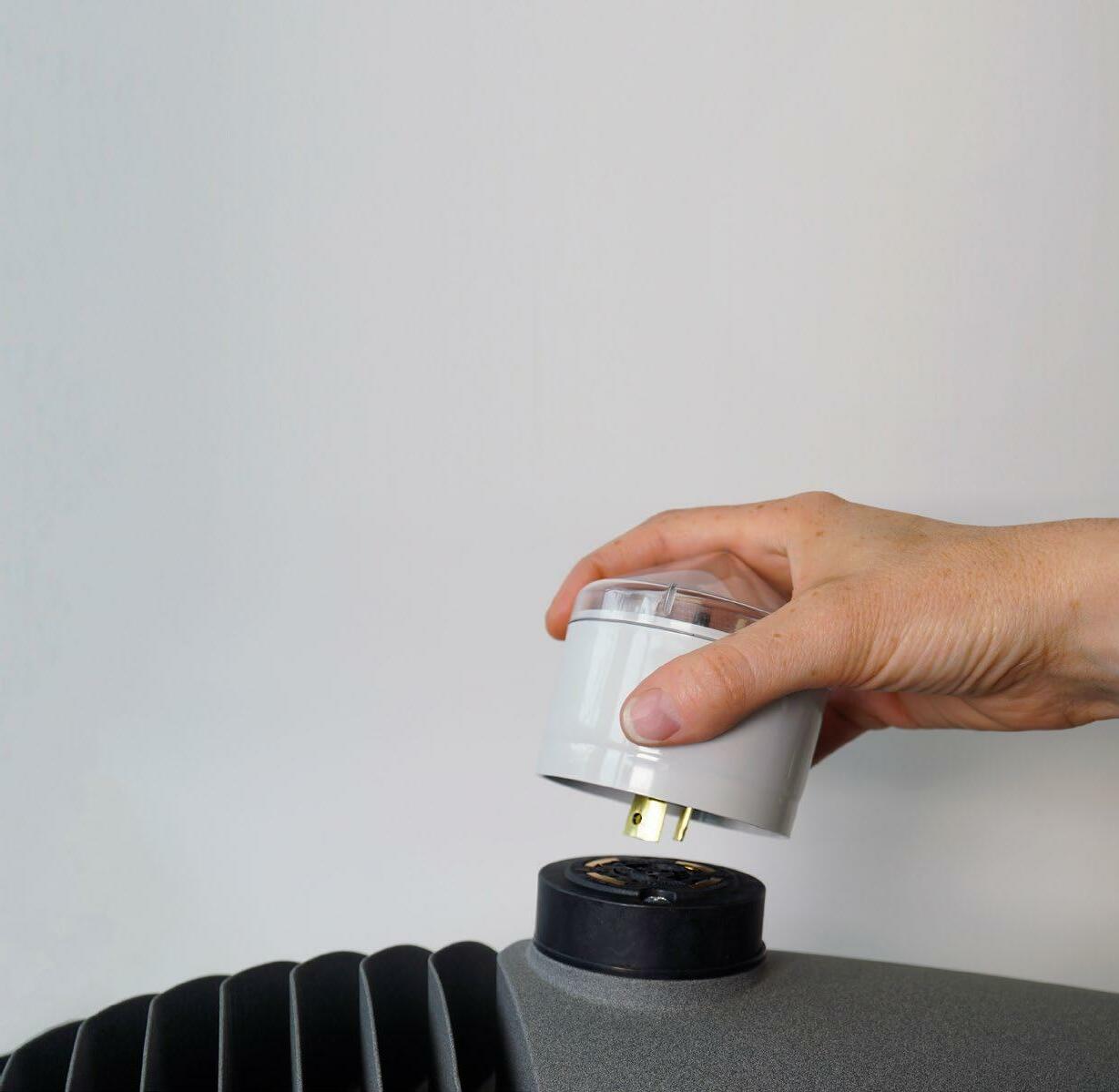


Dr Irene Mazzei is a a knowledge transfer partnership associate working with Stoane Lighting and the School of Computing Engineering and the Built Environment at Edinburgh Napier University
[1] IPCC, ‘An IPCC Special Report on the impacts of global warming of 1.5°C’, 2019, https://www.ipcc.ch/site/assets/uploads/sites/2/2022/06/SR15_Full_Report_HR.pdf [2] UNFCCC, ‘Climate Plans Remain Insufficient: More Ambitious Action Needed Now,’ 2022, https://unfccc.int/news/climate-plans-remain-insufficient-more-ambitious-action-needed-now [3] European Commission, ‘A European Green Deal’, 2019, https://ec.europa.eu/info/strategy/priorities-2019-2024/european-green-deal_en#documents [4] European Commission, ‘Environmental performance of products & businesses – substantiating claims,’ 2022, https://ec.europa.eu/info/law/better-regulation/have-your-say/initiatives/12511-Environmental-performance-ofproducts-businesses-substantiating-claims_en [5] UN Environment Programme, ‘BRIGHTEN UP! Making the switch to efficient lighting’, 2017, https://www.unep.org/news-and-stories/ story/brighten-making-switch-efficient-lighting [6] Bohannon B and Allison K, ‘TM66 – Creating a circular economy in the lighting industry now available | CIBSE’, 2021, https://www.cibse. org/policy-insight/news/tm66-creating-a-circular-economy-in-the-lighting-industry-now-available [7] Hamot L and Bagenal-George C, ‘Embodied carbon in building services : a calculation methodology’, 2021 [8] ‘PEP Ecopassport’, http://www.pep-ecopassport.org/ [9] PEP Ecopassport, ‘PSR-0014-ed1.0-EN-2018 07 18 – Specific Rules for Luminaires’, 2018, www.pepecopassport.org [10] PEP Ecopassport ‘PCR-ed4-EN-2021 09 06 – Product Category Rules for Electrical, Electronic and HVAC-R Products’ 2021
FEBRUARY 2023 LIGHTING JOURNAL www.theilp.org.uk 36
Figure 4. Front cover of CIBSE’s TM66 – ‘Creating a Circular Economy in the Lighting Industry’
Figure 3. A ZTA.50 surface fitting by Stoane Lighting


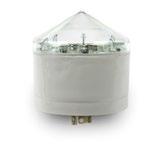
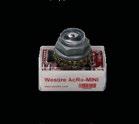

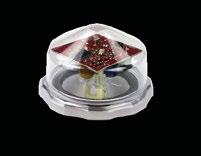
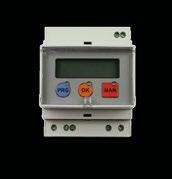
FIT & FORGET For our full range visit westire.com UK & International Sales James Wright E: jwright@westire.com T: +44 7713 958962 Irish Sales Fiona Gallagher E: fgallagher@westire.com T: +353 97 81209 HQ & Manufacturing Westire Technology Ltd, Ind. Estate, Belmullet, Co. Mayo, Ireland. E: info@westire.com T: +353 97 81200 F: +353 97 81400 Part-Night Versions Available on our entire product range The Original ‘Fit & Forget’ Lighting Controls and Accessories UK & International Sales James Wright E: jwright@westire.com T: +44 7713 958962 Irish Sales Fiona Gallagher E: fgallagher@westire.com T: +353 97 81209 HQ & Manufacturing Westire Technology Ltd, Ind. Estate, Belmullet, Co. Mayo, Ireland. E: info@westire.com T: +353 97 81200 F: +353 97 81400 Westire Technology are renowned in the street lighting industry for unparalleled quality & reliability. Our past experience allows us to boast long standard product warranties and life expectancies far beyond.
LEARNING ENVIRONMENT
of the space, which is one of the main elements for pursuing the goal of inclusion, in particular when considering visually impaired people.
design within a classroom enables the improvement of the lives of learners through flexible spatial organisation.
By Paolo Creati
Ateacher of pupils with special educational needs, as I am, has the opportunity to work directly with a variety of disabilities and disorders.
The areas in classrooms where students engage in their academic and social activities are crucial to enhancing both learning and emotional development. In fact, the interaction between our bodies and the environment governs relationships, thus a well-designed place is essential.
Invoking the idea of ‘embodied cognition’, which holds that there are other resources besides the brain involved in the development of behaviours, is helpful. In other words, our behaviour is formed and controlled by our nervous system’s contact with the outside world as much as through what we learn in the classroom.

It is also necessary of course to mention the concept of ‘Design for All’. The is linked to the concept of an environmental design that guarantees accessibility for all its users, in particular considering disabled people.
This concept was born in the 1970s, based on the theory that, before proceeding with the design of any building or space, you need to think in advance about the diversity of people who will then be able to act in the space.
A correct lighting design could satisfy these criteria because, first of all, it assures flexibility in the organisation
Last autumn, David Gilbey and Dipali Shirsat make a compelling case within LightingJournalfor truly inclusive, multisensory design, especially the need to be designing for those who are visually less able or visually impaired (‘Theeyeshaveit’, October 2022, vol vol 87 no 9).
My work, and research, very much echoes their argument. In essence, I argue that it is imperative lighting designers are involved in the design and delivery of school environments (something that is often not necessarily the case). This is in order to enhance the functionality of artificial and natural light and, in turn, enhance the learning experience for all but, especially, for pupils and students with visual impairment.
POWER OF GOOD LIGHTING DESIGN
The power of light – and good lighting design – enables visually impaired learners to have the same rights as sighted people to the learning process and environment.
My research proposes that using well-specified and well-considered lighting
The theoretical study is centred around the design of school spaces, in particular, for those with visual sensory disability. It also underlines how light can increase attention spans and regulate our emotional sphere, therefore potentially being advantageous for all pupils, whatever their ability or disability.
My study was conducted using a qualitative approach, involving sending out a questionnaire to a sample of lighting designers from different parts of the world.
This data was then collated, along with an analysis of scientific sources about the potential role of light. I am also grateful to the precious help of lighting designer Martina Frattura, who introduced me to the lighting design community.
WALLS, CEILINGS AND FLOORS
So, what are my conclusions? First, if we truly want to design inclusive spaces for learners we have to pay attention to surfaces, such as the walls, ceilings and floors.
The walls are a major player in this, as they shelter vertical openings. Therefore, window sizes and their positions need to be a prime consideration within any inclusion design. But, at the same time, there is a danger here.
This is that, for students with visual impairments, visual discomfort can be increased by glare, which may occur if natural light is tampered
FEBRUARY 2023 LIGHTING JOURNAL 38
Well-specified and wellconsidered lighting design within a classroom can improve the lives of all learners, especially those who are visually impaired
Lighting for schools
with inappropriately. One solution is the application of filters that reflect and diffuse light, yet maintain the unaltered quality of natural light.
The ceiling, as a vertical surface, is helpful for guiding our general perception of space. The colour of this surface influences our whole awareness of the room. A lighter ceiling, for example, will give the appearance of greater height; conversely, a darker ceiling will create a ‘grotto’ effect.
In a special needs learning environment, it may therefore be wise for the ceiling to be kept as a neutral colour and/or conform to the walls. This is because, in the presence of high contrast, a visually impaired person can become susceptible to an overload of information and consequently lose attention.
On the other hand, a high contrast applied to the floor helps the utility of the space by clearly delineating the perimeters of the available space, in the process (hopefully) providing clear and distinct wayfinding information for all students.
After surfaces, it is important to consider the internal components of the classroom, mainly the desks and the visual teaching boards. A visually impaired student’s desk may need to provide space for different tools, depending on the type of disability, so, in turn, they may require a wider plane of light.

At the same time, a larger surface area brings with it a higher possibility of reflection, including from the windows and lighting fixtures, which can potentially lead to discomfort and harm learning.
One simple solution is to ensure desks being used in this sort of environment are specified so they can tilt, so enabling the student to control the amount and direction of light to suit their needs.
When it comes to the visibility, glare and reflectance of teaching aids, digital whiteboards will normal include as standard an intensity adjustment facility. However, it may be advisable also to apply an

anti-reflective filter, and the same preventive measure must be taken when the student uses the computer.
IMPORTANT ROLE FOR LED
We all know one of the great advantages of the new generation of LED luminaires is their potential for personalisation and control. This opens up all sorts of possibilities for improving the learning environment for pupils with special needs and visual impairment, too.
The level of illumination required by students may of course vary depending on whether they are fully blind or not, as well as the type of visual impairment the student is experiencing.
Some students, for example, may be sensitive to light if their retina or lens has not fully formed, or vice versa, they may need for more and brighter light if visual acuity is absent.
Therefore, to achieve the best lighting, student and teacher must experiment with various lighting conditions. This, again, is something that is much more achievable with the flexibility and control of LED.
A suitably specified LED luminaire ensures light intensity, flow, and colour variation can be adjusted significantly. In terms of visual comfort, this could mean varying the intensity and colour temperature during the day.

Bear in mind, too, the level of light and shadow in a space can be affected by the external environment – if students are learning of an evening, for example, or if there is a sudden change in the weather. Having the ability –easily accessible and adjustable by the teacher – to modulate the emitted light is a big help in maintaining the same illumination.
Alongside artificial light, the use of biophilic design and sustainable materials inspired by nature – plants and greenery – can relieve feelings of isolation, tension, and apathy. Creating a stimulating visual environment improves performance and learning.
Several studies, in fact, have shown that
contact with nature can have beneficial effects on learning. In one study, for example, children with ADHD were tested after walking in green areas and natural environments. They obtained better concentration scores than those who had instead walked in the city.
SUMMARY
The purpose of my work is to formulate a design ethos and approach in which different elements combined create educational environments that more take into account and are responsive to the individual needs of students, particularly those with visual sensory disabilities.
The teacher, it is clear, should not base their activity on mere knowledge transmission.
Students learns through interaction, personal discovery and experimentation – and their interaction and engagement with the educational space plays a central role within this.
Lighting professionals therefore have a pivotal role to play in helping educators – and school budget holders – to understand how the illumination of a learning space (both natural and artificial) can improve learning, performance and wellbeing.
Light is what brings us alive, makes everything ‘visible’ (both literally and metaphorically) and brings back beauty.
Light – and great lighting – enables us to establish an emotional connection to what we can see and, in turn, what we learn within a space. It is a fundamental stimulus within our physical environment and one that influences our health, our performance and our cerebral activity.
www.theilp.org.uk FEBRUARY 2023 LIGHTING JOURNAL 39
Paolo Creati is a teacher of students with special educational needs and has a particular research interest in the role of light and lighting within the classroom
HTBB FOLLOW YOUR NORTH STAR
The latest ILP ‘How to be brilliant’ event saw Hoare Lea’s Juan Ferrari and Brad Joseph make an impassioned and uncompromising plea for lighting to step up and lead the change that’s needed to mitigate global warming, as the practice is doing through its ‘North Star’ commitment
By Nic Paton
The inaugural LiGHT 22 show and exhibition in November saw more than 3,000 people interested in light and lighting come together for what many felt was a much-needed return to physical networking and showcasing.
As we reported in Lighting Journal last month (‘Master class’, vol 88 no 1), central to the event organised by [d]arc media was two days of high-class CPD panel discussions. With the ILP being a partner, the first day concluded with a ‘How to be brilliant’ event led by Hoare Lea’s Juan Ferrari and Brad Joseph.
How to be brilliant, to recap, is the ILP’s programme of free, informal talks, presentations and lectures designed to connect successful, senior lighting designers with students, juniors and new entrants to the profession.
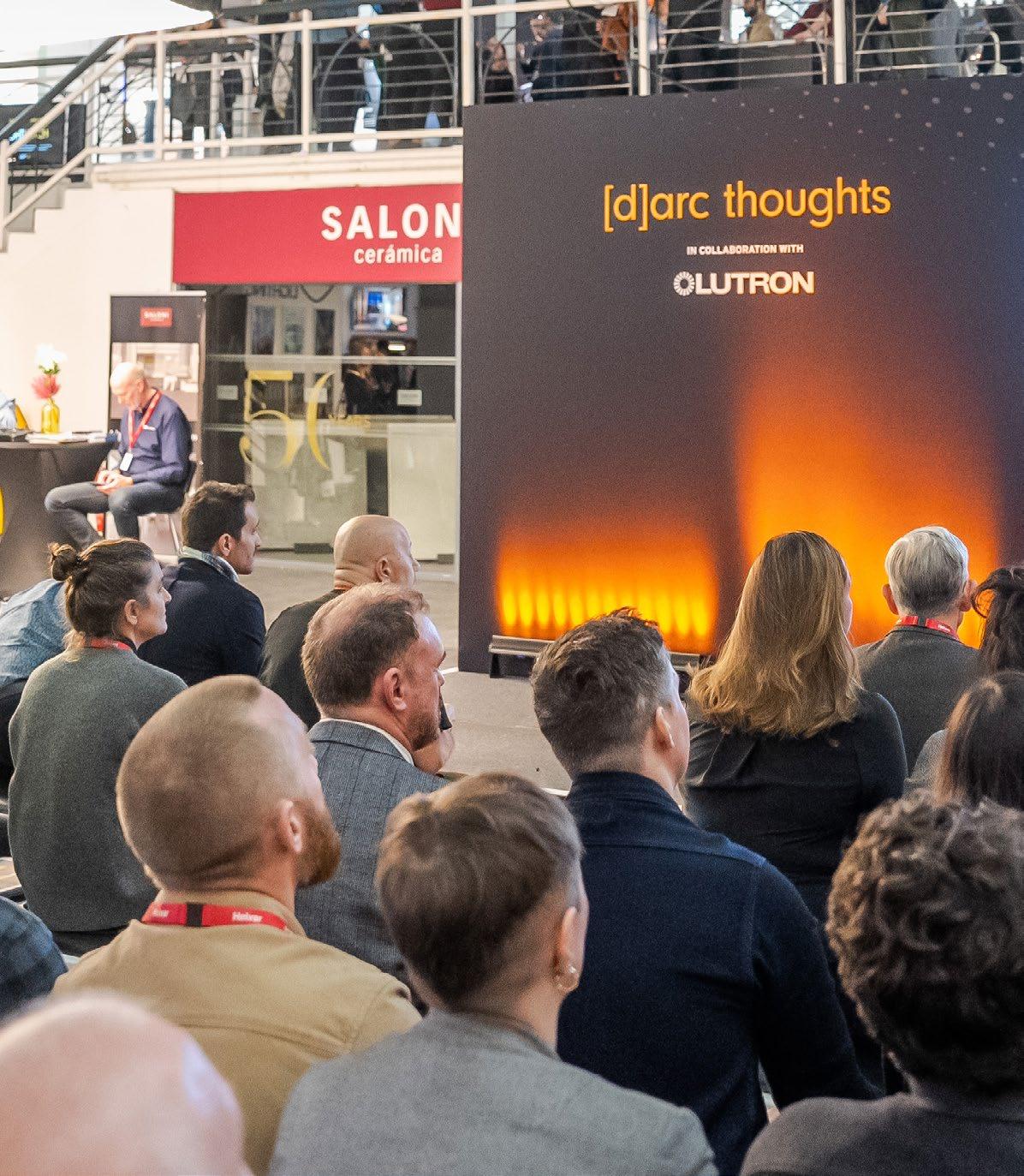
Juan and Brad’s discussion was focused on the idea of ‘how to be on it’ and was, in truth, something of a tale of two halves. Juan, project director at Hoare Lea, provided a passionate and compelling ‘call to action’ on responding to and mitigating climate change. Brad, by comparison, outlined how we can all be more ‘on it’ day to day in our work and
practice but also, within that, how we can also become more ‘on it’ in terms of articulating and promoting climate-change mitigation messages within lighting design.
Juan, opening the event, played a video where the legendary David Attenborough made it clear how tackling climate change is not optional. Even a temperature rise of 1.5 degrees centigrade will profoundly change the planet – yet containing global warming just to this level of increase will now be challenging. ‘It is within our power to do it; we can do it; we must do it. Then there will be a future for the planet,’ he warned.
Juan, in turn, had a message that was unapologetic in stating the situation he felt we find ourselves in. ‘Let me tell you one thing – we are the problem. The lighting design community is the problem. We need to start moving swiftly and quickly to the solution side of the court,’ he said.
‘We are at a moment that is quite complex – and lighting design is part of the solution. Lighting is not just about the things that
FEBRUARY 2023 LIGHTING JOURNAL 40
HTBB
make us feel good, it is about the things that do us good, and do good for the planet.
‘We are probably the last generation of people who will have a chance to revert this mess. I know I look like a preacher going “it is the end of the world”, but it is – we can laugh about it, but it is.
‘Get yourself in the driving seat quickly; make sure that the decisions you make and take are always the right ones, in lighting design terms, if you’re a lighting person. If you’re doing other things, make sure too that they are the right thing.

‘Make sure that you are among people who do good and not around people who do things in the wrong way or who are selfish. On a positive note, let’s talk about what we can do. What we, the lighting design community, can do and what we have been doing,’ Juan added.
HOW TO ‘BE ON IT’
This was where Brad Joseph, principal designer at Hoare Lea, came in to articulate ten practical, positive ways in which we can all
more be ‘on it’ in our day-to-day practice. This, in turn, can enable us to be leading, directing and championing this absolutely vital climate-change conversation.
1. Steer the narrative. ‘I love a chat, but what you’ve got to do is steer the narrative,’ Brad explained. ‘You need to take control of this. If clients are telling you “we need to do it this way” but their way is not sustainable, it’s not ecologically balanced, you’ve got to start to steer that narrative. ‘It is quite hard, but try to do it; and you can often do it by humanising it,’ he added.
2. Have a worthy cause. ‘We need to think about the planet. We need to consider what lighting does and what the impact is,’ Brad emphasised. ‘This is something people can empathise with, in terms of what David Attenborough was saying, in terms of
the fact that we are in serious danger.’
3. Change perceptions. ‘I love history and this is about taking these little snippets from history, doffing your cap to them, but making sure you are bringing that into the future,’ Brad said.
‘When you’re going back to, say, the 1800s, light sources were things that were cherished; they were protected; you carried them around with you. They weren’t these big and bright things, like how you get nowadays with office lighting.
‘I’m not saying we have to go around illuminating tables by candlelight. Because that would of course not be the thing to do. But can we look at history and make it influence the decisions that we are making in terms of our design in the present? I think it’s a good thing,’ he added.
www.theilp.org.uk FEBRUARY 2023 LIGHTING JOURNAL 41
The ILP’s ‘How to be brilliant’
The ILP’s ‘How to be brilliant’
4. Lead the journey. ‘Importantly, remember there are loads of people who are on this journey with us, in terms of the project – there are architects, interior designers, us, project management and client teams,’ Brad highlighted.

‘So, if we’re trying to change perceptions – and we’re trying to say we’ve got to be better here – we as lighting designers and the lighting design community, we need to lead that conversation.

‘There is no quick way up a mountain. You’re going to go up, down, you might have to go back on yourself, you might be in some treacherous areas. But you can get to the summit. And, when you get to the summit, it is so refreshing. When you see the journey from where you started to where you’ve ended up, you’ve got to bring people along that way, and you’ve got to hold their hands,’ Brad added.
5. Embrace the ‘fuzzy front end’. Brad conceded this might not be a term immediately familiar to many in the audience but argued it was essentially like when you get writer’s block. ‘It is when you run into something and you don’t know what the hell to do. It happens in every single design element, be it architecture or interior design, when you’re there and you’re like – I don’t know what to do here. I have not got a clue,’ he explained.
‘What you have got to do is embrace that. Because it happens. It is a design process. And when you find that golden nugget of information, that thing that puts your narrative together, it is the most satisfying thing in the world. It is amazing.
‘So, embrace the fact that you’re going to get stuck. Embrace the fact that you might do some complicated things here. And it might take a bit of brain power and a bit of effort. But embrace that, it’s a challenge; we’re trying to change perceptions,’ Brad added.
6. Make it designed by people for people. ‘This is the most important. That a project is designed by people – in
terms of all of us – but we’re designing it for people,’ Brad advised. ‘This is where you can humanise your narrative, make it relatable to people. If we forget that we’re designing for people, I just think we’ve totally lost the plot.
‘So, think about the people who you are designing the space for; it is all about the people,’ he added.
7. Make it welcoming, accommodating and approachable. ‘In order to do this – to design for people – we’ve got to be welcoming,’ Brad continued. ‘We’ve got to be accommodating. We’ve got to be approachable. We know that, in terms of what we’re
FEBRUARY 2023 LIGHTING JOURNAL www.theilp.org.uk 42
Juan Ferrari during ‘How to be brilliant’. ‘We are the problem,’ he said, urging all lighters to step up in tackling climate change
Forge, a formerly vacant office block converted into a much more thermally efficient and modern working space. Photograph Jack Hobhouse
doing, we’re introducing new things. If we do it with a smile on our face; if we do it and we engage with our clients, if we engage with our architects, and we’re approachable and we smile, and we enjoy being in the room, people actually latch on to that and see it as a positive.

‘We like people who smile, we like people who are engaging; bring that to the table. And if you struggle with it, bring people who are like that with you.’
8. Focus on skills and individuality. ‘As they say, teamwork makes the dream work,’ Brad explained. ‘I love
working with my team because we’ve all got different talents, we’ve all got different skills. But, as a collective, we put them all together and we are an absolute machine.
‘We can all look at people’s positive characters and mould them into our narrative to create something that makes the world better,’ he added.
9. Grow your idea. ‘A design or project idea often starts off with something small,’ Brad explained. ‘It can start off with a conversation, a sketch, it can start off however you want it to.
‘But grow it, cultivate it, use your team members, use people who are around you to make this idea bigger, to make it better, to make it something that is actually tangible. Make it something that someone thinks “yeah, I want that”.’
10.Be there. ‘This is for everybody in the lighting design community,’ Brad said, returning to the overarching theme of the event. ‘What we need to do is just to be there for each other. Sometimes there can be fights and cliques and things like that. We need to push that to the background.
‘What we need to do is hold each other’s arms and be there. As long as we’re with each other, push each other; if we push each other and bring each other up, we can change the world, I reckon.’
CLIMATE-CHANGE CHALLENGE
Juan then returned to conclude the event and refocus minds back on the climate-change challenge we all face – both individuals and the industry as a whole.

‘We have a problem. We all know that we have a problem. We need action. We need a solution. And we need good communicators. Somebody who spreads the message that we are putting forward,’ he emphasised.
‘Without that, we’re going to fail. And if we fail, our life is at risk. You might not care about it, but I think I do care about it. I actually want us to have a planet to live on, and I want our kids to have a planet where they can live. And action starts today,’ he added.
Juan highlighted Hoare Lea’s ‘North Star’ commitment to lighting design (see panel overleaf) and argued this was something all lighting design practices can and should embrace. ‘I am happy for others to take the principles and make them their own. We need to remind ourselves that everybody needs to be on board when designing.
‘Because when we’re designing, too often we forget about certain things. We forget about the planet, we sometimes compromise, we sometimes go “well, yeah, that will do”. And that is the beginning of the problem.
www.theilp.org.uk FEBRUARY 2023 LIGHTING JOURNAL 43
The
ILP’s ‘How to be brilliant’
Brad Joseph outlines his ten tips to be more ‘on it’
This page and overleaf: Hoare Lea lighting projects, illustrating the practice’s ‘North Star’ approach. This image: 245 Hammersmith Road, the sustainable and energy efficient new office building in the Hammersmith Business Improvement District, west London. Photograph by Jack Hobhouse
The ILP’s ‘How to be brilliant’
HOARE LEA’S ‘NORTH STAR’
Hoare Lea’s ‘North Star’ is the design practice’s very public commitment for responding to the climate crisis.
As the company has put it: ‘As built-environment experts, we have so much to contribute. Within us lies the power and the influence to truly make a difference. And the cliché is true: with that power comes great responsibility… A responsibility to the natural world and to society; both the people impacted by our projects and, of course, our clients.’
To that end, it has articulated five core tenets of being ‘human centric and planet conscious’ in the way its teams work, think and design. These are principles that, it argues, any individual or organisation that wants to lead the way in the future of responsible engineering and consultancy can also embrace. The five principles are:
1. Designing lighting for human experience, balanced against the needs of our planet, to create energy-efficient, sustainable, and people-centric spaces.

It is where we shouldn’t be, and the thing we shouldn’t do,’ he said.
‘If you can join us on this one, it will be really important for all of us. Because we need to do this. And we need to do it quickly. It means the world to us; it does mean the world to us,’ Juan said.
‘We need to spread the message. We need to talk. We need to communicate. We need to say where we’re falling short on trying to achieve. But also we need to do. We do need to do now,’ Juan added.
In other words, whether it’s about reviewing lighting requirements and guidance (which Hoare Lea has been doing with the Society of Light and Lighting, among others); maximising or promoting daylight; working to improve lighting in schools, communities
or the home; or promoting intelligent controls in street lighting – lighting and lighting design can lead the way.

‘We cannot keep designing to put things into a bin. Please, let’s stop doing that. I’m not Greta [Thunberg]. But I am asking you one thing. To please choose the direction that you want to move in. Because in your choice – and I am pretty sure that you should be making your choice now – is where we are going to end up being,’ Juan emphasised.
‘Having said that, I do think there is a future. I will remind you that David Attenborough, one of my idols, thinks that we can do this. So let’s actually do that. Let’s do the right thing, and we all know what that is,’ he added in conclusion
FIND OUT MORE
Juan and Brad’s full talk is available to watch online at https://vimeo.com/777352290
You can also find out more about the ILP’s ‘How to be brilliant’ programme, including updates on plans for 2023 at https://theilp.org.uk/events/ how-to-be-brilliant/
The How to be brilliant programme is this year generously being supported by BEGA, which enables the ILP to keep them as free-to-attend events.
2. Extending ‘being on it’ and creative lighting design to diverse projects, not just those that are high end, so that the benefits are available to everyone.
3. Specifying products on the basis of energy efficiency, embodied carbon, refurbishment/reuse/ recycling capacity, ecological impact and human quality of life.
4. Sharing knowledge for the benefit of all to help clients, colleagues and collaborators better understand lighting’s role in environmentaland people-centric decisions.
5. Advocating for faster and more ambitious ecological and energy-efficiency policies across the industry – always mindful of the needs of people.
You can find out more about North Star by scanning the QR code:
FEBRUARY 2023 LIGHTING JOURNAL www.theilp.org.uk 44
135 Bishopsgate, a refurbishment project enhancing the eastern entrance to the London’s Broadgate. It emphasises the creative use of daylight as well as decorative pendants designed to perform. Photograph by Jack Hobhouse
Hawley Wharf, Camden, which again prioritised a sustainable approach. Photograph by Jonathan Rush
Locked service position

Internal retention safety wire




Quick release connections
Aligning spirit level
Removable luminaire head






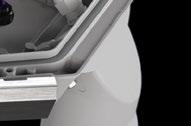

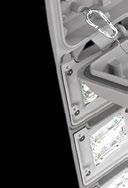

Preliminary TM66 score: 2.8 excellent circularity.












Contact us: info@holophane.co.uk www.holophane.co.uk TM THE ALL NEW
CONTRACTOR FOCUSED FEATURES
GOING UNDERGROUND
Accidental strikes on underground pipes and cables can cause expensive and timeconsuming hold-ups to projects, including meaning roads need to be closed for longer. A new digital ‘National Underground Asset Register’ will allow contractors, including those working within lighting and highways, to know better what to expect before breaking ground
 By Nic Paton
By Nic Paton
LIGHT UP, DRIVE OVER

FEBRUARY 2023 LIGHTING JOURNAL 46
EMINERE™ INGROUND anolislighting.com
It is estimated the economic cost of accidental strikes on underground pipes and cables is, staggeringly, in the region of £2.4bn a year.

Lighting is, of course, an industry that regularly needs to ‘get down and dirty’ underground, whether that be laying or accessing cables, excavating sites or installing fixtures and fittings.
The fact the government is building a new ‘National Underground Asset Register’ (NUAR), essentially a digital map to help contractors and operators make sense of our subterranean infrastructure before breaking ground, is therefore potentially good news.
The development of the register is being led by the Geospatial Commission, an expert committee located within the Cabinet Office.
The plan is that the first iteration of the register – covering Wales, north east England and London – will go live from next month (March). Northern Ireland and the rest of England will then follow from September 2024.
As the commission has said: ‘NUAR will improve the efficiency and safety of underground works by creating a secure, auditable, trusted and sustainable platform.
‘It will provide a consistent, interactive digital map of buried asset data, accessible when, where and how it is needed by those planning and executing excavations on behalf of underground asset owners. It will also lead to enhanced communication between parties and improve data quality.’
DATABASE RESTRICTED TO STATUTORY UNDERTAKERS
So, how will it work in practice? The first thing to make clear is this register isn’t going to be some sort of open-source Google Maps-style tool anyone can simply pull up on their phone.
For fairly self-evident security reasons, access to the service will be restricted to ‘statutory undertakers’ and their supply chains, the commission has said.
This means, in other words, only companies (or their contractors) who are legally allowed to undertake work in or under the highway network, including electricity, gas, telecommunications, water and other utilities. Included within this, given their role on the electricity side, should be lighting engineers and contractors.
Login will be through a two-factor authentication process, with users able to navigate via a map and see contextual information about the above-ground information.
Users will be able to navigate by street name, unique property or street reference number (UPRN and USRN), and postcode. They’ll be able to specify and edit an area of interest by a circle or polygon, display and query asset data, and share locations with other users.
One caveat, however, is going to be the accuracy of the information they’re pulling up. Creating the register has been a complex process, not least because it has meant combining datasets from around 650 asset owners into a single, uniform database, often from datasets that are themselves not necessarily 100% accurate.
IMPORTANT FEEDBACK MECHANISM
Therefore, even when the map is ‘finished’ a key element will be an ongoing feedback mechanism. Utility firms and others will be encouraged to report back into the dataset and share what they’ve learned when they actually dig, especially any missing or erroneous data.
As of October last year, more than 250 asset owners in the three initial regions had been engaged, with 161 data exploration agreements signed. These enable the NUAR team to explore asset owner data without
IN NUMBERS
£2.4bn
Estimated economic cost of accidental strikes on underground pipes and cables
4 million
Estimated length (in km) of buried pipes and cables in the UK
4 million
Estimated number of holes dug every year
60,000
Estimated number of accidental strikes per year
£345m
What the Geospatial Commission has calculated will be the economic benefits of the National Underground Asset Register per year
March 2023
Platform set to be operational for Wales, north east of England, London September 2024
Platform set to be operational in Northern Ireland and the rest of England
Highway lighting
publishing it on the live platform.
A total of 97 organisations had uploaded their data to be explored and 58 data distribution agreements had been signed, which enable asset owner data to be published on the live platform.
A public consultation was also held last summer on the register, with the findings being fed into the development process.
As to the benefits of doing all this, in an update published by the commission in October, it argued that taking a national approach to digitalising underground asset data will create estimated benefits of £3.4bn over ten years, or £30 worth of benefits for every £1 invested.
These benefits, it said, could be broken down into:
• Savings from reduced utility strikes (£240m per year)
• Reduced cost of sharing data (£91m per year)
• On-site efficiency improvements for projects (£16m per year)

Just on reducing utility strikes, utility strikes can lead to both direct costs (for example the need to repair damages) and indirect costs (for example project delays and extended road closures), the commission pointed out.
‘Whilst there is some variation by sector the average direct cost per strike is £3,371. Indirect costs are estimated as, on average, 29 times larger than direct costs,’ it added.
When it came to on-site efficiencies, projects can be delayed or abandoned because of unexpected underground assets being found on site. ‘This includes assets which are not on record or recorded incorrectly. Through user interviews, we found that per year 20,000 excavations are abandoned and 38,500 excavations face delays and resumption costs due to unexpected assets,’ the commission said.
‘The NUAR platform is expected to reduce these instances by providing a fuller picture of known underground assets whilst also improving orienteering on-site. It will also improve data accuracy over time through a function which allows workers to report inaccuracies,’ it continued.
‘There are also non-monetised benefits, such as more strategic improvements to street works coordination and subsurface planning, which are not currently quantifiable. Therefore, there is a very high level of overall confidence that the NUAR programme provides value for money,’ the commission report added.
Finally, the commission is encouraging asset owners across England and Northern Ireland to engage with the project and/or share their underground asset data, via email at: nuaronboarding@cabinetoffice.gov.uk
www.theilp.org.uk FEBRUARY 2023 LIGHTING JOURNAL 47
‘THERE ARE LOTS OF NEW PEOPLE TO MEET AND GET TO KNOW NOW WITHIN THE INDUSTRY’
opportunity just to talk to people, that interaction and engagement.
You don’t get that over Teams or Zoom. You can make amazing contacts, pick up conversations about what’s happening locally and so on.
WHAT’S COMING UP
As well as hosting the ILP’s national energy crisis event this month, on Thursday 2 February at the Mercure Daventry Court Hotel in Daventry, Birmingham LDC is working on a range of other events and activities.
This will include a social/networking event, probably a dinner dance, around the time of the next annual general meeting.
By Kieron Jarvis

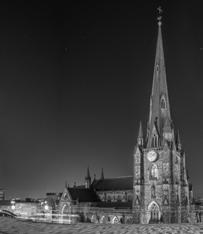
We’re a close-knit team at Birmingham LDC. But we do need more people, both more members to come to events and more people who are willing to volunteer their time and expertise for the committee.
Having said that, we do pride ourselves on offering great CPD and networking opportunities, and many of our events are well-attended. For example, we ran a technical event just before Christmas where the tickets were totally maxxed out, which was great.
The social and networking side of being part of your local LDC is, for me, huge – simply meeting people face to face again; that is something I’d really like to push in 2023. People really do appreciate just having a cup of tea or coffee and a chat, having that
We’ve also got some great venues in the Midlands; we have good links with manufacturers and so there is often the opportunity to come on a factory tour.
For me, our message is simple: come along, come and meet new people and interact. A lot of people have moved jobs because of Covid; a lot of people are now in different roles. There are lots of new people to meet and get to know now within the industry.
So, come along, come and visit some of great venues and interact with colleagues, potential customers and contacts. For me, that’s so important.
Keep an eye out on the LDC website for more details on upcoming events as and when they are finalised.
Recordings of a number of previous virtual ILP Birmingham events can be found on the website. Go to: https://theilp. org.uk/branch/ilp-birmingham/

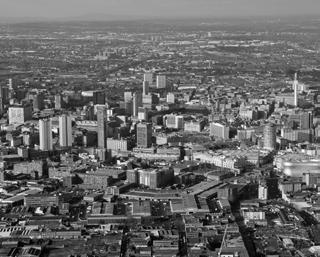
WHO’S WHO
Kieron Jarvis, chair
Michala Medcalf, immediate past chair

 Megan McJannet education
Megan McJannet education
HOW TO GET INVOLVED
Kevin Clark, vice chair



 Aftab Khan, technical
Aftab Khan, technical
 Jonathan Ayers, secretary
Jonathan Ayers, secretary
You can get in touch, and keep in touch with, the Birmingham team by simply emailing birmingham@theilp.org.uk
Networking, engagement and face-to-face interaction will all be priorities for the team at LDC Birmingham this year, so get involved
Kieron Jarvis is chair of ILP Birmingham (Birmingham LDC) as well as being commercial sales manager at DW Windsor
FEBRUARY 2023 LIGHTING JOURNAL 48
‘LDCS ARE THE LIFEBLOOD OF THE INSTITUTION’





members. Our focus is very much about simply trying to take interesting technical content out into the local region.



WHAT’S COMING UP
On 23 February, ILP Durham is holding a technical event to coincide with Carlisle’s ‘City of Lights’ event. The evening will include CPD papers on Hadrian’s Wall and the Carlisle event, followed by a walking tour of the lights.
Looking forward, the LDC will hold its regular ‘YLP takeover’ event on 16 March. This allows YLP members to come and do a presentation in a completely safe environment – 15-20 minutes with no questions or any topic they like, simply to give young lighters an experience of public speaking in front of their peers.
There will also be an event on 20 April at Thorn looking at Cumbria’s experience around dark skies and the impact of circular economy of manufacturing for the lighting industry.
Keep an eye out for more details, and check out previous online events, at https://theilp.org.uk/branch/ ilp-durham/
WHO’S WHO
By Anthony Smith
We’re one of the smaller LDCs. We’re also a bit different in that, whereas some LDCs will two or three halfday or full-day sessions every year, we do five every year, but typically of shorter duration. So, it might just be a couple of hours of an evening.
As you would expect our sessions are very focused on exterior lighting and associated topics however we also try to have the occasional paper focusing on something that’s not solely about lighting, although still engineering based.


For example, we’ve done trips to the Tees Transporter Bridge whilst it was being refurbished. At our upcoming event in Carlisle later this month, too, one of the speakers will be talking about the conservation of Hadrian’s Wall.

That’s not, of course, a lighting-related presentation but it’s about conservation, which does cross over into lighting. So, we do try to put a fairly diverse suite of sessions together that hopefully are interesting to
One of my goals as chair for 2023 is to try to engage with local authorities more. We’ve historically always run free events; we have not typically charged for them. Because the technical content is often an hour or so long, it’s hard to charge people a fee for that anyway, even if we wanted to.
All the events we put on in 2022 had a local authority slant to them or were on topics we believed would be of interest to local authorities. For example, we ran an event in Durham on EV charging and cast-iron welding, which was really well attended. In November, too, we had an event looking at how technology was likely to evolve going forward.
Looking into 2023, I’d love to see more engagement, especially from younger members. We always want to get people on to the committee, we want people to get involved, we want people to be influencing from the inside and make a difference. If people are looking at the ILP and thinking ‘what do they do for me?’, well get involved and we’ll do stuff for you. You’ve only got a voice if you’re in the mix.

What we’re trying to do is just provide technical content that has got interest to lighters from all backgrounds, even though we don’t have a big architectural base in the north east. So come along, get back involved and engage with us again. We’re your community.
We’re never going to get back to exactly
HOW TO GET INVOLVED
You can get in touch, and keep in touch, with the Durham team by simply emailing durham@theilp.org.uk

how things were pre pandemic. The world has changed, and not just because of Covid –the landscape of lighting has changed completely. But we need to make sure that whatever we do is as relevant as it can be. I firmly believe the LDCs are the lifeblood of the Institution.
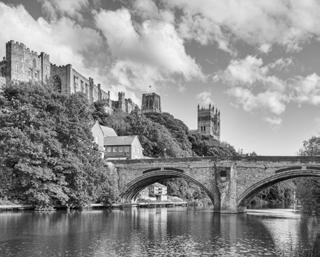
Kevin Dugdale, technical Anthony Smith, chair, and government and policy Andy Kay, contracting Ray Keane, past chair Liam Hay, YLP rep Kris Hickman, products Steve Edwards, architectural Ian Harker, vice chair, and local government Phil Hardie, asset management Elizabeth Harrison, secretary Chris Corr, education
With regular, short evening CPD events, LDC Durham is focusing hard on engaging all lighting professionals, but especially those working within local authorities
Anthony Smith IEng FILP is chair of ILP Durham (Durham LDC) and director of Stainton Lighting Design Services
www.theilp.org.uk FEBRUARY 2023 LIGHTING JOURNAL 49 Inside the ILP: meet your LDCs

FEBRUARY 2023 LIGHTING JOURNAL 50
The use of fluorescent lighting had matured during the Second World War but, by the end of hostilities, it was still primarily thought of as an interior light source. Could it, however, work for exterior use and, especially, street lighting? The race to find out was on
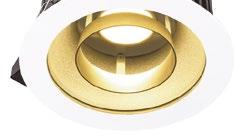 By Simon Cornwell
By Simon Cornwell
The end of the Second World War saw a resumption of the optimism and strive that characterised the preceding decade of street lighting theory, technology and practice.

There was a groundswell of opinion that innovations would continue and accelerate; that new concepts in light sources, materials and manufacturing techniques would quickly be utilised; and that the future of the profession was – if you excuse the tired pun – bright.
One new lamp technology had already reached maturity during the war and looked poised to elbow into the industry. So, immediately after the war, several manufacturers started looking at the fluorescent tube and determining if it could be used for street lighting.
The fluorescent tube was developed just before the Second World War, but really came of age during the hostilities.
Its development was accelerated by the war effort, as new cheap and efficient lighting was an absolute necessity for the concept of ‘maximum production’, in other words running factories round the clock to keep up with their tight schedules.
SCALE AND FLEXIBILITY
By the end of the war, the fluorescent tube had matured as a light source: it was available in different sizes (from the 5ft 80W tube down to the 2ft 20W tube), which offered scale and flexibility. It was available in several colours, two of which were hues of white.

But it was still considered an interior lamp, and no one had really tested its full

Light on the past
capabilities. Could the fluorescent tube be used for exterior use and, in particular, the specialised field of street lighting?
Pre-war thinking had preferred small lamps: lanterns could be made compact and light, could be precision built to give close and accurate optical control, and this in turn would create good brightness patterns on the road surface.
But these point sources could also suffer from inherent discomfort glare (which could be mitigated if correct siting was adhered to) and, on wet surfaces, the reflections from the road surface could collapse to thin streaks, which could become almost blinding.
But what of a large-sized lamp, such as a fluorescent tube? This would be very difficult to control optically (without resorting to large reflectors and enormous lanterns), but would give more tolerance in siting and mounting, and the discomfort glare would be reduced thanks to the low, intrinsic brightness of the lamp.

With these elongated lamps placed across the road, the surface reflection would be considerably broadened and, under wet conditions, the streak would never become excessively narrow or excessively bright.
This was the thinking of L J Davies and W D Sinclair, two designers at British Thomson-Houston (BTH), who began experiments with fluorescent tubes for exterior use in late 1945.
Their most immediate concern was the cold weather behaviour of the standard tube; would it work in the extremes of the British climate?
ON-THE-GROUND TRIALS
Fluorescent tubes were installed outside their Rugby factory and left operating uninterrupted for months without any ill effects. A further 16 80W tubes were studied in a cold store, left running continuously for 4,500 hours at temperatures of -10 to -5 degrees Celsius. They, again, showed no ill effects, apart from only giving 80% of their normal light output.
These same lamps were then operated for a further 3,000 hours, being turned on for periods of one to eight hours, with the starting and run-up conditions closely studied.
The results of the experiments were positive, leading BTH’s engineers to agree that no troubles would be experienced with the use of fluorescent tubes outside (unless the voltages and temperatures were abnormally low).
The engineers then turned their attention to lantern design, particularly for traffic routes, using the Ministry of Transport Report(1937) as their guide.
This called for lanterns to be mounted at spacings of between 120ft to 180ft (150ft
www.theilp.org.uk FEBRUARY 2023 LIGHTING JOURNAL 51
ILLUMINATING INTERIORS AMBIANE™ AP anolislighting.com WARMING COLOURS & ADJUSTABLE WHITES
The bright streaks created on the road surface for a point light source (left) and an elongated light source (right). This diagrammatically showed the advantages of the broader light source
Main framework of the ‘3x80’ lantern showing the 5ft 80W tubes in-situ
Light on the past
non-starter for BTH. So, with traffic route lighting off the table, BTH turned its attention to the lighting of civic areas and shopping centres. The suggestion was that good colour and the absence of glare would be more important in these places and the capital value of the busy town centre permitted a ‘deluxe’ system.
To that end, a smaller lantern, mounted at a closer spacing of 80ft to 100ft, would be advantageous and useful in these areas. It was along these lines that BTH worked on its first design, a three-tube lantern it called the ‘3x80’.
Two tubes were used to fashion the main beams with the third tube positioned underneath. As the lanterns were mounted so close together, a controlled cut-off (semi-cut-off) distribution was created with ‘anti-glare’ shields mounted above the parabolic reflectors.
preferable), to be mounted at heights of 25ft, and to give a lumen output per 100ft linear spacing of between 3,000 to 8,000 lumens.
Peak intensities of existing high-pressure mercury, low-pressure sodium and tungsten lanterns were typically around 5,000 candles, which gave the uniform road brightness the researchers were aiming for.
But the best a single 80W 5ft fluorescent tube could achieve, using reflectors of practical dimensions, was around 1,500-1,800 candles.
BTH theorised that a seven-tube lantern would be required to fulfil the requirements of the specification. This lantern would house three tubes either side of the road to create the main beams with one tube situated beneath to ‘fill in the distribution’.
This seven-tube monster lantern would have consumed around 700W, been extremely heavy and large, and so would have a high capital cost, high running costs and be visually unacceptable. It was clearly a
The lantern was self-contained and included all the chokes, starters and power correction capacitors for operation. This was a necessary decision, as the lanterns were to be mounted on double span-wires directly above the centre of the roadway. As there was little control of the wide main beams, then a central mounting was more advantageous.
Pulleys were also fitted, along with a simple tractive wire device, which allowed the lanterns to be pulled to the kerbside for servicing.
RUGBY INSTALLATION
The first trial installation of the 3x80 was along Rugby’s High Street in 1946. This proved to be highly successful: the wide beam spread of the 5ft tubes was seen as a distinct advantage. Kerbs, pavements and the faces of the adjoining buildings were well illuminated and this all gave good visibility.



An added benefit of the tubes was their white colour (‘warm white’ was used over
‘daylight’) which preserved the natural colours of the buildings.
BTH was also slightly sneaky: selecting a narrow road that was built up with high vertical façades on either side. This provided ample opportunity for all the light from the lanterns to be utilised.
With an eye on the Association of Public Lighting Engineers (APLE) next conference that September in London, BTH then arranged with local energy supplier, Central London Electricity Limited, a second trial installation along Old Bond Street in the capital.
The same lanterns and span-wire systems were installed, and the energy authority reported that the new system of lighting consumed about half the power of the pre-war installation.
‘REVOLUTIONISE OUR IDEAS’
As the Public Lighting journal (No #42, July-September 1946) mentioned ‘… [this] forms an experiment in street lighting of great originality which may revolutionise our ideas and methods and do much to reduce the risk of street accidents after dark.’
Like the high street in Rugby, the London location was a narrow street with high, vertical buildings providing a convenient façade, and showed off the new lighting to its best.
BTH was upbeat and enthusiastic about the trials.
It anticipated that the capital expenditure would be higher than alternative systems (namely high-pressure mercury or low-pressure sodium) but the costs were not necessarily prohibitive, and the light quality was a definite benefit for these high-prestige areas.
The firm stated that further tests, including designing and installing smaller residential or side-street lanterns, would be next, and that it would be energetically pursuing the use of fluorescent tubes in the future.
But BTH was not alone in its interest. Davies and Sinclair gave a paper at the London conference (‘ExperimentalApplications of Tubular Fluorescent Lamps to Street Lighting’) in which they detailed their research and showed off pictures of the Rugby and London installations.
The discussion that followed revealed that the General Electric Company (GEC) had also been developing its own fluorescent street lighting lantern.
An open invitation was made for anyone to travel to its research laboratories in Wembley, north London, to see it – because GEC had made the seven-tube monster and was intending to install it.
Night view of the Rugby trial installation. The street name was never given in the literature but it’s Rugby High Street
Day view of the Old Bond Street, London installation. This clearly shows the 3x80 lanterns positioned over the centre of the carriageway by span wires
Night view of the Old Bond Street installation showing how evenly and brightly the road was lit. It is clear that BTH’s engineers selected narrow streets with narrow pavements and tall buildings so as to give the best results for the trials
FEBRUARY 2023 LIGHTING JOURNAL www.theilp.org.uk 52
Simon Cornwell BSc (Hons) is an R&D development senior manager at Dassault Systems
Kirium Pro S
DESIGNED TO PERFORM, BUILT TO LAST
A more sustainable lighting solution designed to meet the needs of both people and the environment
With its lightweight design, increased versatility and refined performance, Kirium Pro S sets new standards in efficiency, sustainability and longevity. Follow

dwwindsor.com
to learn more.
us on LinkedIn
‘THE IMPACT LIGHTING HAS ON SOCIETY IS DISPROPORTIONATE TO THE AWARENESS PEOPLE HAVE OF IT’

Continuing our snapshots of young and new entrants to the industry, undergraduate engineer Sofia Piccoli explains why she chose lighting as a career
By Sofia Piccoli
TELL US ABOUT YOURSELF
My name is Sofia Piccoli. I have been working for WSP for just over a year as an undergraduate engineer in the lighting and energy team.
HOW DID YOU GET INTO LIGHTING?
I am currently on my final year of my degree apprenticeship in electrical and electronic engineering and last year I chose to change job to do something closer to what I was studying at university. So my course manager advised me to apply to the lighting and energy team at WSP.
WHY LIGHTING?
When I was offered the opportunity, it appealed to me instantly as it seemed the perfect balance of rigorous and creative work.
During the interview process I was told about all the fields that lighting touches on and that I would have had the possibility to experience street lighting, architectural lighting and work on more technical aspects of the electrical side as well which is a chance that is not usually given in other disciplines.
Above and opposite: some of the Westminster lighting columns Sofia has been helping to research
FEBRUARY 2023 LIGHTING JOURNAL 54
WHAT DO YOU FIND MOST INTERESTING ABOUT YOUR ROLE AND WHY?


My favourite part of my role is the wide variety of projects I get to work on but also seeing how lighting impacts everyday life. I am especially interested in learning about how lighting improves the safety of roads, town centres, tunnels and so on.
HAVE YOU BEEN INVOLVED IN ANY PROJECTS YOU ARE PARTICULARLY PROUD OF, AND WHY?
I particularly enjoyed taking part in research for new non-destructive-testing methods for lighting columns and especially for new technologies that would enable testing beyond the embellishment kit on the lighting columns in Westminster for our client FM Conway and Westminster City Council.
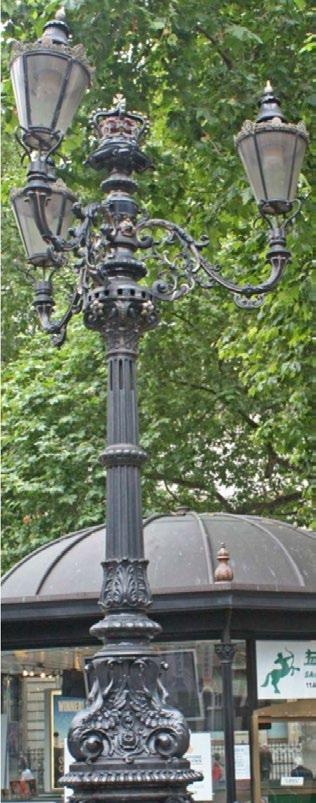

The purpose of the research was to find a way to test the structure of a column using non-destructive testing methods specifically in the Westminster CC, as most of the columns have embellishment kits that don’t allow for accurate testing. So, it’s all about testing the structure of the column underneath the kit without removing it.

During the research process I had the chance to speak to many experts in both lighting and non-destructive-testing fields and that changed and improved my day-today design work.
HOW DOES LIGHT INSPIRE YOU?
Light inspires me to always think outside the box, to try and experiment with new methods and ways to improve the world we all live in.
Young and new lighters
WHAT BARRIERS OR CHALLENGES WOULD YOU SAY THERE ARE FOR YOUNG PEOPLE TO ENTER THE INDUSTRY?
I think the main barrier is that it is not represented and not talked about enough. The impact that lighting has on society is disproportionate to the awareness people have of it.
It is only since working in the industry that I have started noticing street lighting and constantly think about ways to improve it. It should be mentioned more often when dealing with safety in towns and on the road, for example.
WHAT WOULD YOU IDENTIFY AS KEY CHALLENGES FACING THE INDUSTRY FOR THE FUTURE?
I think the main challenge is the same that all the industries are facing at the moment and that is finding a way to neutralise the impact we have on the natural world and save and improve the climate for the present and future generations.
HOW HAS THE ILP HELPED YOU ON YOUR LIGHTING ‘JOURNEY’?
The ILP is a great support for education and opportunities to keep improving myself on my lighting journey.
WHERE WOULD YOU LIKE TO BE IN TEN YEARS’ TIME?
I haven’t really thought that far ahead yet! I am focusing on getting my degree, learning as much as I can and experiencing different fields and roles within the lighting industry so I can find my place.
WHAT WOULD BE YOUR MESSAGE TO OTHER YOUNG PEOPLE INTERESTED IN OR THINKING ABOUT A CAREER IN LIGHTING?
My advice is to take any opportunity to go outside of your comfort zone. Enjoy learning as much as possible in any field and find the right balance of learning on the job and on a course.
GET IN TOUCH
Don’t forget, if you’re under 35 or new to the industry and would like to tell your story during 2023, simple email LightingJournaleditor Nic Paton on nic.cormorantmedia@outlook.com or the ILP’s Jess Gallacher on jess@ theilp.org.uk. We’ll then send you a questionnaire to fill in and return with a photograph. Simple!
Sofia Piccoli: ‘The ILP is a great support for education’
www.theilp.org.uk FEBRUARY 2023 LIGHTING JOURNAL 55
Sofia Piccoli is an undergraduate engineer within the lighting and energy team at WSP
The 2023 Professional Lighting Summit
MANCHESTER,
HERE WE COME
This year’s Professional Lighting Summit will be held from 14-15 June in Manchester. So save the date!
By Jess Gallacher
Last year saw the much-needed return of the face-to-face Professional Lighting Summit, with ILP members gathering in Bristol for a hugely enjoyable, if sweltering, two days of CPD, networking and product showcasing.
This year we’re hitting the M60 and heading to the amazing city of Manchester. So, please circle 14-15 June in your 2023 diaries!

There will, of course, be further updates on the venue and other details on the ILP website and within LightingJournalas and when they’re available.
In the meantime, the ILP has also put our regular call for papers and speakers. Very simply, we’re looking for:
• Interesting topics
• Expert knowledge
• Inspirational talks
• Case studies
• Exclusive papers that won’t be given before the event
1 MARCH DEADLINE FOR PAPERS
If you’re interested, you’ll need to put in a submission before 1 March. This will need to include your full name, organisation and contact details; the title of the proposed paper; a short (250-300 words) synopsis of the paper for our reviewers to evaluate; and details of any event or publication that has previously featured the paper.
Bear in mind, the ILP is always very supportive of first-time speakers. So, whatever your level of experience in the industry, don’t be shy about putting your name into the hat. However, applications must come from the speaker themselves.
If you’re not sure, the ILP’s Technical Manager Guy Harding has said he is more than happy to have an informal chat with prospective speakers beforehand. You can call him on 01788 576492 or drop him an email at guy@theilp.org.uk
Once you’re ready to go, simply send your submission to clare@theilp.org.uk and we’ll
do the rest. But remember, the submission deadline is 1 March, so don’t leave it too late. I look forward to catching up with all in Manchester!
WHAT YOU NEED TO KNOW
What: The ILP’s 2023 Professional Lighting Summit
When: 14-15 June
Where: Manchester (venue to be confirmed)
Paper submissions deadline: 1 March
Where to submit paper proposals: clare@theilp.org.uk
Where to find further details: scan the QR code
Jess Gallacher is Engagement and Communications Manager for the ILP
FEBRUARY 2023 LIGHTING JOURNAL www.theilp.org.uk 56
BESPOKE FESTOON LIGHTING

• Low Voltage
• LED & Xenon options

• IP68 rated
• RGBW system available
We create bespoke low energy, durable festoon lighting for architects, designers, retail chains, sign makers, ship builders and more. Contact us to discuss your lighting project.

Tel: +44 (0)1245 329999
Email: sales@lumisphere.co.uk
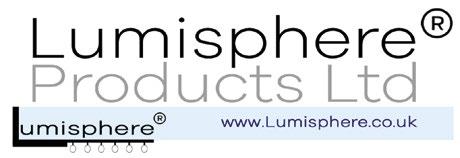
www.lumisphere.co.uk
Spring 2023
Module A – 13 February
Module B – 20 March
Module C – 22 May
Contact: angela@theilp.org.uk
Autumn 2023
Module A – 25 September
Module B – 16 October
Module C – 13 November
Why not kick start your lighting learning journey today

Scan to book your place
Scan for more information


ARCHITECTURE | FESTIVE | TREES | MARINE | SIGNAGE | SEAFRONT | RETAIL | MORE
LIGHTING CONSULTANTS
This directory gives details of suitably qualified, individual members of the Institution of Lighting Professionals (ILP) who offer consultancy services


HERBIE BARNIEH
BEng CEng MILP PROJECT CENTRE
1 AMERICA SQUARE, LONDON, EC3N 2LS
T: 0330 135 8950, 077954 75570
HERBIE.BARNIEH@PROJECTCENTRE.CO.UK
WWW.MARSTONHOLDINGS.CO.UK/PROJECTCENTRE
Efficient, innovative, and bespoke lighting design services from an award winning consultancy.
Experienced in delivering exterior lighting projects from feasibility studies to post construction services. Whether it’s highway, street, or public realm lighting, let us assist you to realise your project goals.
STEVEN BIGGS
IEng MILP
MILESTONE INFRASTRUCTURE
PETERBOROUGH PE1 5XG
T: 07834 506705
STEVEN.BIGGS@MILESTONEINFRA.CO.UK
MILESTONEINFRA.CO.UK

Award winning lighting design specialists, delivering innovative design, installation and maintenance solutions in highways, public realm, commercial and architectural environments.
Our HERS registered team provide design strategies, impact assessment, technical & certifier support.

BONNIE BROOKS
BA(Hons) BEng (Hons) MSc
CEng MSLL MCIBSE MILP
THE LIGHTING BEE LTD

EXETER EX4 1NF
T: 07840 054601, E: INFO@THELIGHTINGBEE.CO.UK
WWW.THELIGHTINGBEE.CO.UK
Professional independent lighting design consultancy providing designs for all exterior applications, including street lighting. Specialists in assisting at the planning application stage with designs, strategies, lighting impact assessments, and expert witness, with a focus on mitigating ecological and environmental impacts.
SIMON BUSHELL
MBA DMS IEng MILP ENERVEO
PORTSMOUTH PO6 1UJ
M: +44 (0)7584 313990 T: +44 (0)121 387 9892
E: SIMON.BUSHELL@ENERVEO.COM
WWW.ENERVEO.COM
Professional consultancy from the UK’s and Irelands largest external lighting contractor. From highways and tunnels, to architectural and public spaces our electrical and lighting designers also provide impact assessments, lighting and carbon reduction strategies along with whole installation packages.
LORRAINE CALCOTT
IEng FILP IALD MSLL ILA BSS IT DOES LIGHTING LTD

THE CUBE, 13 STONE HILL, TWO MILE ASH, MILTON KEYNES, BUCKINGHAMSHIRE, MK8 8DN
T: 01908 560110 E: INFORMATION@ITDOES.CO.UK
WWW.ITDOES.CO.UK
Award winning lighting design practice specialising in interior, exterior, flood and architectural lighting. Emphasis on section 278/38, public realm, ecology receptor mitigation and supporting Councils with planning approvals, CDM2015 and SBD accredited. Specialists in circadian spectrally specific lighting design.
MARK CHANDLER
EngTech AMILP
MMA LIGHTING
CONSULTANCY LTD



READING RG10 9QN
T: 0118 3215636
E: MARK@MMA-CONSULTANCY.CO.UK
WWW.MMA-CONSULTANCY.CO.UK

Exterior lighting consultant’s who specialise in all aspects of street lighting design, section 38’s, section 278’s, project management and maintenance assistance. We also undertake lighting appraisals and environmental lighting studies
KEVIN RAMSAY
IEng MILP MIET SWECO
SWECO, EDINBURGH EH3 9QG
T: 07467685753 E: KEVIN.RAMSAY@SWECO.CO.UK
WWW.SWECO.CO.UK
Lighting and electrical design consultancy providing private and public sector innovative professional services. Specialising in Section 38, Section 278, RCC, highways, architectural, public spaces, car park, lighting impact assessments, Internet of Things, interior and emergency lighting, EV design. From planning to post-construction we provide innovative and environmental balanced solutions.
REBECCA HATCH
IEng MILP
WSP
LONDON WC2A 1AF
T: 07385 461143
E: REBECCA.HATCH@WSP.COM
WWW.WSP.COM
National team of specialist lighting and energy professionals offering the latest thinking and best client service across all aspects of lighting and energy, both public and private sector. Architectural, Highways, Environmental, Local Government, Electrical and Technical Expertise
STEPHEN HIGHAM
IEng MILP
SHD LIGHTING CONSULTANCY LTD
BOLTON BL2 6SE
M: 07834 490 192
E: STEVE@SHDLIGHTING.CO.UK
WWW.SHDLIGHTING.CO.UK

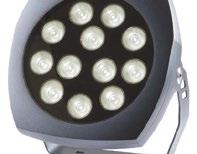
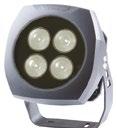
Outdoor lighting design consultancy specialising in street lighting and private lighting design services. We provide Section 38, Section 278, Car Park lighting designs, Commercial lighting and Environmental Impact Lighting Assessments and planning application consultancy advice throughout the UK.
ALLAN HOWARD
BEng(Hons) CEng FILP FSLL WSP
HERTFORD SG13 7NN
T: 07827 306483
E: ALLAN.HOWARD@WSP.COM

WWW.WSP.COM
Professional artificial and daylight lighting services covering design, technical support, contract and policy development including expert advice and analysis to develop and implement energy and carbon reduction strategies. Expert witness regarding obtrusive lighting, light nuisance and environmental impact investigations. registered personnel.
ALAN JAQUES
IEng FILP ATKINS
NOTTINGHAM, NG1 5FW
T: +44 (0)115 9574900 M: 07834 507070
E: ALAN.JAQUES@ATKINSGLOBAL.COM
WWW.ATKINSGLOBAL.COM
Professional consultancy providing technical advice, design and management services for exterior and interior applications including highway, architectural, area, tunnel and commercial lighting.
Advisors on energy saving strategies, asset management, visual impact assessments and planning.
PATRICK REDMOND
MILP MSLL IEng Tech IEI
REDMOND ANALYTICAL MANAGEMENT SERVICES LTD.

M: + 353 (0)86 2356356
E: PATRICK@REDMONDAMS.IE
WWW.REDMONDAMS.IE
Expert lighting and electrical infrastructure for all interior, exterior, and emergency lighting applications. On street EV charging infrastructure design. Authorising Officer and Live Working Manager for Local Authorities.
ANDREW LONGMAN
BEng (Hons) CEng MILP MIET
MHEA -Managing Director
DFL-UK

WINCHESTER SO23 7TA
T: +44 (0)1962 855080 M: +44 (0)7779 327413
E: ANDREW@DFL-UK.COM
WWW.DFL-UK.COM
Professional lighting design consultancy offering technical advice, design and management services for exterior/interior applications for highway, architectural, area, tunnel and commercial lighting. Advisors on lighting and energy saving strategies, asset management, visual impact assessments and planning.
ANTHONY SMITH
IEng FILP
STAINTON LIGHTING DESIGN SERVICES LTD
STOCKTON ON TEES TS23 1PX
T: 01642 565533, E: ENQUIRIES@STAINTONLDS.CO.UK
WWW.STAINTONLDS.CO.UK

Specialist in: motorway, highway schemes, illumination of buildings, major structures, public artworks, amenity area lighting, public spaces, car parks, sports lighting, asset management, reports, plans, assistance, maintenance management, electrical design, Lighting Impact Assessments and Dark Skies Compliant Lighting.
NICK
SMITH
IEng FILP MIES
NICK SMITH ASSOCIATES LIMITED
CHESTERFIELD, S40 3JR
T: 01246 229444
E: MAIL@NICKSMITHASSOCIATES.COM
WWW.NICKSMITHASSOCIATES.CO.UK
Specialist exterior lighting consultant.
Private and adopted lighting and electrical design for highways, car parks, area and sports lighting. Lighting Impact assessments, expert witness and CPD accredited Lighting design AutoCAD and Lighting Reality training courses.
ALAN TULLA
IEng FILP FSLL
ALAN TULLA LIGHTING

WINCHESTER, SO22 4DS
T: 01962 855720
M:0771 364 8786
E: ALAN@ALANTULLALIGHTING.COM
WWW.ALANTULLALIGHTING.COM
Visual Impact Assessments for planning applications. Expert in minimising environmental impact. 3D building modelling of light spill. Exterior and Interior architectural lighting design. Site surveys and lighting measurements. Specialises in problem solving and out-of-the-ordinary projects..

MICHAEL WALKER
IEng MILP CMS
MCCANN LTD
NOTTINGHAM NG9 6DQ
M: 07939 896887
E: M.WALKER@JMCCANN.CO.UK
WWW.MCCANN-LTD.CO.UK
Design for all types of exterior lighting including street lighting, car parks, floodlighting, decorative lighting, and private lighting. Independent advice regarding light trespass, carbon reduction and invest to save strategies. Asset management, data capture, inspection and testing services available.
PETER WILLIAMS
EngTech AMILP
WILLIAMS LIGHTING CONSULTANTS LTD.
OFFICE 6, STONEHOUSE BUSINESS CENTRE, 1A MIDDLE ROW, CHIPPING NORTON, OX7 5NH
T: 01608 642530 E: PETER.WILLIAMS@WLCLIGHTING.CO.UK

WWW.WLCLIGHTING.CO.UK
Specialists in the preparation of quality and effective street lighting design solutions for Section 38, Section 278 and other highway projects. We also prepare lighting designs for other exterior applications. Our focus is on delivering solutions that provide best value.

KEEP IT IN THE FAMILY ARCSOURCE™ anolislighting.com
Neither Lighting Journal nor the ILP is responsible for any services supplied or agreements entered into as a result of this listing


Where industry knowledge sets us apart. Street Lighting Supplies Ltd is a dedicated specialist supplier of external, commercial, amenity and public lighting products. Street Lighting Supplies Limited 20 -22 Abbotsinch Road, Abbotsinch Industrial Estate, Grangemouth, FK3 9UX Email: sales@streetlightingsupplies.com • Web: www.streetlightingsupplies.com Office: 01324 665602 Also: Newcastle - Tel: 0191 217 0119 • sales@lightandenergydesigns.com Bridgend - Tel: 01656 335835 • bridgend@streetlightingsupplies.com You Want Some? Come Get Some!
FL820
Introducing our next generation FL820 high output LED floodlighting system.

Lighter weight, and more powerful we’re certain it will become your first-choice solution.

For sports, airports, ports and large area lighting applications.

Celebrating a Century of British Manufacturing +44 1920 860600 cuphosco.com enquiries@cuphosco.com






















 Beata Denton
Beata Denton

























 By Dr Jim Uttley and Professor Steve Fotios
By Dr Jim Uttley and Professor Steve Fotios



 By Elizabeth Harrison and Paul Brownbridge
By Elizabeth Harrison and Paul Brownbridge


















 Figure 2. Spectral distribution of monochromatic ‘red’ LED Clearfield solution (graphic courtesy of Signify))
Figure 3. Comparisons of spectral distribution of multiple CCTs (graphic courtesy of TRT Lighting). This illustrates the reductions in blue light peaks possible through use of warmer CCTs
Figure 2. Spectral distribution of monochromatic ‘red’ LED Clearfield solution (graphic courtesy of Signify))
Figure 3. Comparisons of spectral distribution of multiple CCTs (graphic courtesy of TRT Lighting). This illustrates the reductions in blue light peaks possible through use of warmer CCTs













 By Chiara Carucci
By Chiara Carucci

















 By Dr Irene Mazzei
By Dr Irene Mazzei
























































 By Nic Paton
By Nic Paton










 Aftab Khan, technical
Aftab Khan, technical
 Jonathan Ayers, secretary
Jonathan Ayers, secretary














 By Simon Cornwell
By Simon Cornwell














































